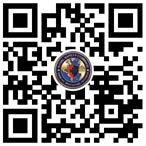

GROUND WARRIOR
NORMALCY BIAS
"THAT
A PAUSE

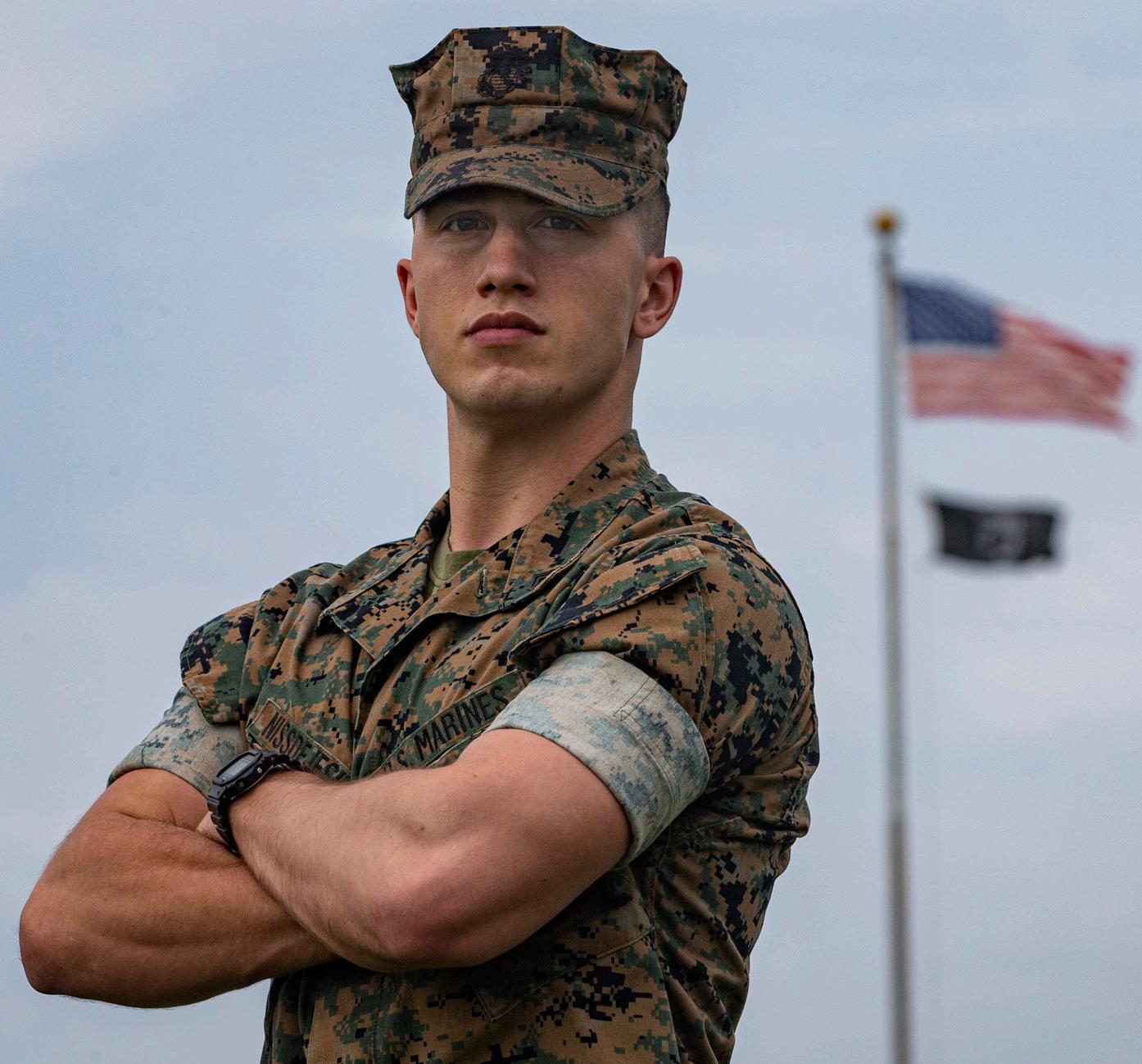
A Letter from the Deputy Assistant Secretary of the Navy for Safety

Marines, Sailors, civilians and families,

My name is Pete Lynch, the Deputy Assistant Secretary of the Navy for Safety. As an engineer by trade, where most of my experience has been in construction and facility/utility maintenance, I have always valued the importance of safety, compliance and adherence to established procedures and protocols. That has only become more evident as I have immersed myself with more focus in the safety and occupational health portfolio for both the operating forces and the shore. I am seeing examples everyday of how we as a Department of the Navy are assessing risk, applying sound management principles and processes to mitigate risk to ensure the safety of our personnel while enhancing a culture safety that is prevalent across our force. We must continue to communicate and reinforce the importance of safety to prevent unnecessary injuries, loss of life or materiel.
I am proud to provide an introduction to the latest edition of the Ground Warrior magazine. This highly professional and informative periodical is an incredible resource dedicated to
keeping you, your teammates and our families safe. It is periodicals like the Ground Warrior that reinforce the safety message I mention above that is so important to keeping our personnel safe.
The focus of this edition of Ground Warrior is normalcy bias – a cognitive force detractor. While you may not be familiar with this title, it is a common mental phenomenon that impacts us all. By definition, normalcy bias is a tendency to underestimate the likelihood or impact of a negative event or mishap from occurring. As a result, we frequently underestimate the potential threat because of overconfidence, familiarity, fatigue, peer pressure or complacency. This can occur on the most complex of missions or routine tasks such as a drive on a busy, congested highway. We need to foster a questioning attitude. Did you consider what is different today? Is the weather a factor? Are there changes in the roadway or new construction? Is there heavy traffic due to rush hour? All of these considerations should be elements in your decision process to ensure a safe outcome. As a Department, we are constantly honing in on ways to address normalcy bias because 80% of all mishap are a result of human error. To address this, we reinforce at every opportunity the importance of sustainment training, standardization of policies and the importance of acknowledging the uncertainties to enhance your preparedness.
Please take advantage of all the information within this Ground Warrior edition. There is so much material that can benefit us all both in our on duty and off duty lives. I ask you to implement the strategies provided to prevent reckless or complacent behavior, overconfidence or denial that it could be you that is involved in a preventable mishap.
Take care of yourself and your family, get the appropriate rest, and heed the advice in this Ground Warrior to stay safe! I look forward to seeing you in the fleet.
Peter S. Lynch Deputy Assistant Secretary of the Navy for Safety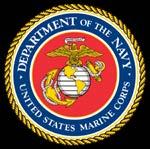
A Letter from the Sergeant Major of the Marine Corps

Marines, Sailors, civilian teammates and families,
It’s with great pleasure I write to you in Ground Warrior to talk about what’s most important to our organization – it’s you. The Commandant and I cannot stress this enough that you are what’s most important to the Marine Corps. You are why we win. No matter the challenge, I can trust the Marines to my left and right to fight and win when it’s time. That’s because in this organization, everyone fights. Everyone carries their weight so the Corps, as a team, completes the mission decisively and successfully.
You know as well as I do the challenges we face as people are infinite. Aside from combat operations and training exercises, we face challenges in daily life. From the simplest task of driving to work, to running your formation of Marines up First Sergeants Hill, these are challenges that we cannot simply neglect to put thought into.
As much as everyone fights, and are eager to do so, every now and then we must stop and
think, and sometimes, take a tactical pause in life to give your full time and attention to some of the most menial tasks so we can do them properly, safely and for the right reasons.
Here’s the bottom line: I cannot accept losing people from preventable accidents and mishaps. You must be on the field to fight.
As Marines, we conduct inherently dangerous operations. It’s a part of our job to be bold, aggressive and lethal, but we cannot accomplish it without our small-unit leaders and junior Marines applying safety and risk management measures.
As temperatures rise and days lengthen, both stateside and overseas, the service prepares for the summer season. The summer is the Marine Corps’ busiest time of year, bringing more training, more travel and more well-deserved liberty. We must also recognize that the summer brings Marines closer to various hazards, both on and off duty, that take Marines out of the fight, out of their units, and away from their families. The loss of one Marine is one too many – especially when it can be prevented.
Noncommissioned officers, you are the backbone of the Marine Corps and the front-line defense for our Marines. Without your daily mentorship and leadership, we cannot train our Marines to recognize hazards, both within themselves, such as fatigue, recklessness and complacency, as well as the external dangers. Staff noncommissioned officers, you are the skeletal foundation of the entire Corps. Without your experience, wisdom and professionalism, we cannot effectively lead, mentor, and guide both our NCOs and officers to safely accomplish the mission. The positive impact and lives saved by our enlisted leaders is impossible to quantify, but it’s noticeable.
As you read through this issue of Ground Warrior, understand the importance to recognize and to communicate internal hazards and predispositions, such as “Normalcy Bias” or fatigue, as much as the external ones. Often, it is our internal biases and natural tendencies that expose us to the most harm in our profession, and it our obligation to be vigilant against anything that can harm us. Marines, I need you to watch out for yourself and for each other. Everyone fights, and no one fights alone.
So, train hard, go on liberty and have fun, but understand we need every Marine in our formations – ready and at 100% – when the nation calls.
The Commandant and I are proud of all of you. I look forward to seeing you in the field.
Semper Fidelis, Carlos A. Ruiz Sergeant Major of the Marine Corps
Carlos A. Ruiz Sergeant Major of the Marine Corps
Ground Warrior Editorial Staff
Commandant of the Marine Corps Safety Division
Lt. Col. Bryan Sargent, Ground Branch Head
Capt. Baylen Smith, Ground Safety Officer, Ground Branch
Naval Safety Command
Jeffrey Jones, Department Head, Safety Promotions-Public Affairs
Priscilla Kirsh, Division Head, Media Communications
Jonas Natividad, Director, Mishap Investigations
Rebecca Coleman, Safety Promotions-Public Affairs
Ani Pendergast, Safety Promotions-Public Affairs
Kenneth Goss, Safety Promotions-Public Affairs
Jerome Mapp, Safety Promotions-Public Affairs
Mike Del Favero, Safety Awareness
Front cover: U.S. Marine Corps Cpl. Eric-John Niss deJesus, military policeman, headquarters and support battalion, Marine Corps Installations
Pacific - Marine Corps Base Camp Smedley D. Butler, poses for a photo as a select for the enlisted commissioning program, Camp Foster, Okinawa, April 16, 2021. (U.S. Marine Corps photo by Staff Sgt. Lucas Vega)
Back cover: U.S. Navy Special Warfare Combat Crewman (SWCC) candidates hold their boat overhead for the “Surf Passage” of Basic Crewman Training on Naval Amphibious Base Coronado, California, Oct. 30, 2023. (U.S. Navy photo by Mass Communication Specialist 2nd Class Alex Kerska)
Ground Warrior Magazine is a forum where Marines, Sailors and civilians can share safety-related experiences, thereby providing valuable lessons learned to others within the community. Input from the fleet is crucial in improving safety culture, conducting safe operations, and thus, maintaining readiness. Ground Warrior is published jointly between the Commandant of the Marine Corps Safety Division and the Naval Safety Command. Content within Ground Warrior does not necessarily represent the official views of, nor is it endorsed by, the U.S. government, Department of Defense, U.S. Navy or U.S. Marine Corps. Photos and artwork may be representative and not necessarily show the people or equipment discussed. The Ground Warrior editorial staff reserves the right to edit articles for readability. Reference to commercial products does not imply endorsement. Unless otherwise stated, content may be reprinted without permission by giving proper credit to the magazine, author and photographer when applicable.
www.safety.marines.mil
www.navalsafetycommand.navy.mil


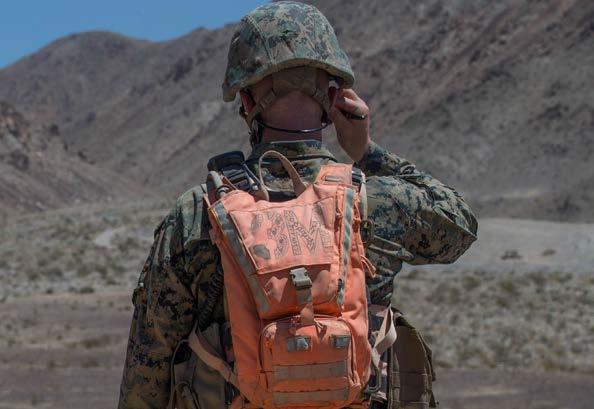
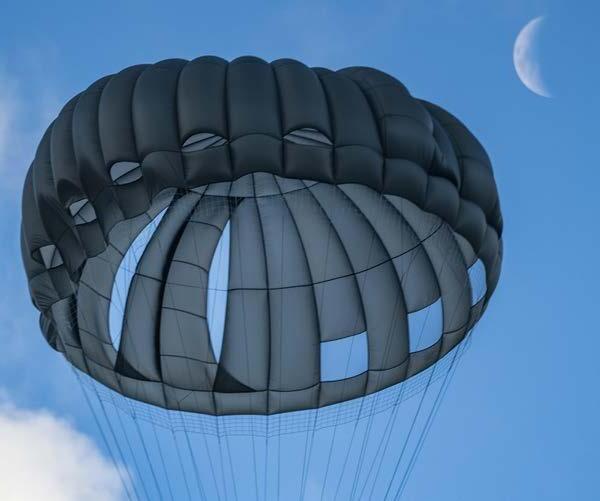




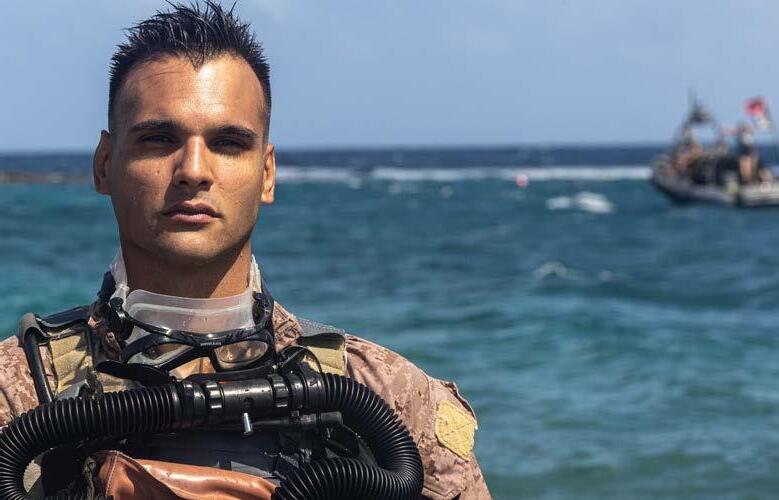

Ms. Jessica Niss recreates a photograph of her son, Marine Cpl. Eric-John Niss deJesus, on Marine Corps Base Camp Foster, Okinawa, Japan, May 26, 2023. The original photograph was taken on MCB Camp Foster after Niss deJesus acceptance to the enlisted commissioning program on April 16, 2021. Niss deJesus drowned on June 5, 2021. Ms. Niss visited various Marine Corps installations in Okinawa to share her son’s story and advocate for water safety. (U.S. Marine Corps photo by Cpl. Martha Linares)

PRACTICE A PAUSE... ...IT CAN SAVE A LIFE
By Cindy KirkmanOn May 19, 2023, Marine mom, Jessica Niss, returned to the island where her son’s life was lost. She spoke to hundreds of service members with motherly love as she described the heartwrenching circumstances surrounding the drowning of Marine Cpl. Eric-John Niss deJesus . By sharing her broken heart, Niss hopes to memorialize her son’s life, help people understand how valuable they are and bring awareness to the risks of the beautiful yet treacherous seas that surround Okinawa.
“I hope I can compel Eric-John’s fellow Marines and Sailors to ‘practice a pause’ before taking risks,” Niss said. “My son was so loved, each of these young men and women is loved. If they can see that through our story, then this experience is worth it.”
Love Through Actions is a video, created by the Marine Corps Installations Pacific-Marine Corps Base Butler (MCIPAC-MCBB) Safety Office described the details of the story for the briefing.
Marine Cpl. Eric-John Niss deJesus , 24, lost his life to a rip current on June 5, 2021, at Odo Beach on Okinawa’s southern shore. He and three friends entered the water in sea condition “Caution” as hazardous water conditions began to worsen. The sea condition was elevated to “Danger” while the Marines were in the water. As they began to struggle against the powerful current, Niss deJesus , swimming at the back of the group, encouraged his friends to “keep going” and “don’t give up.” Three in the group made it to safety, but they lost sight of Eric-John. His body was miraculously recovered five days later approximately 1,000 yards from where he had last been seen.
Niss deJesus, stationed at Camp Kinser, was a military police K-9 handler and later a watch commander for the Provost Marshals Office. He had every reason to
feel confident in the water. As a Minnesota native, he loved swimming his entire life. He was in top physical condition, completed lifeguard training and was scuba certified.
Shawn Curtis, then the MCIPAC-MCBB safety director, arranged the speaking series as an innovative way to stress water safety to service members. He said this story, told firsthand, will help young men and women realize that the decisions they make in a fleeting moment can have devastating effects on those they love. The safety office provided the opportunity for Niss to share her story of love and hope to 7,500 Marines and Sailors, across six installations, over six days, as well as students attending Kubasaki and Kadena Air Base high schools.
Since 2000, the military community has lost 42 members to the waters surrounding Okinawa, including 18 Marines, as reported by the safety office.
“Jessica’s story is bone chilling but the motherly love by which she shares it is heartfelt,” Curtis said. “If reliving it prevents one death, then the returns certainly outweigh costs. We sincerely hope this provides some healing for Jessica and her family.”
“It is our intent that leaders will take this opportunity to have [meaningful] discussions with their units. This may help them emphasize how important each Marine and Sailor is to those who love them, so the choices they make have an impact beyond themselves. Taking time to "practice a pause" prior to engaging in their activity of choice is a selfpreservation tool." said Niss.
Niss, a surgical technician and mother of six from rural Minnesota, raised her children to know that they are always loved; that being strong in their faith meant that in times of need, God would meet their needs.
The fallen Marine’s mother spoke at the Camp Foster Theater. Niss, before an

auditorium of 400 Marines and Sailors, shared stories of her son’s childhood, intimate details of his love for his family and friends and the hardship of hearing the news that her son was missing at sea.
Niss then took the audience through the days surrounding the rescue efforts. She detailed the anxiety she felt each time she spoke with Col. Jeffrey Hammond, Niss deJesus’ commanding officer, and the reassurance she felt as he explained the extensive rescue efforts being made by the U.S. military and Japanese Coast Guard over the course of five days. Niss explained the helplessness she felt during the COVID travel restrictions and how she struggled to come to Okinawa to try to find her missing child. Marine officials contacted her multiple times each day with detailed updates. Still, she sat, feeling hopeless, at home in Minnesota. She emphasized how her family and strong faith sustained her through her darkest days.
(Continued on next page)

“Eric-John was in water and they couldn’t find him,” said Niss, explaining her first reactions. “In my momma’s heart, in that moment, I said, ‘I’m gonna help him. I am going to find my boy.’”
Days passed.
“On day four, this momma got pissed,” Niss admitted. “I went outside, I looked around and I said, ‘God, you know every blade of this grass and you know every leaf on these trees; so, I know you know where my son is!’
She pleaded with God for His help.
“I called Colonel Hammond. He took every one of my phone calls and he let me know that I mattered. I asked him to please keep looking,” Niss said.
Hammond used every resource possible.
“Then on day five, I heard someone at the door,” Niss said. “I came down the steps.
And there was Gunnery Sgt. Sexton, the assigned casualty assistance calls officer at the bottom of my stairs.”
As their eyes locked, the Marine mom knew her son had passed.
I said, “Ya?”
And he said “Ya.”
“Thank you, God. You found my boy.” “Where is he? I need to go to him.”
Five days had passed since Niss first received word that Eric-John was missing at sea. Five days of hoping for the best. During those days, responders worked tirelessly on land and at sea to find the 21-year-old Marine: The Japanese Coast Guard, pilots, military personnel and finally, as the weather cleared, local divers. It was a local diver who found the body in the coral on June 9, 2023.
Despite the obstacles of COVID restrictions, Niss made her way to Hawaii to receive her son’s body from the plane. She was finally in the same room with her son, but she was advised not to view him due to the damage done by the sea.
“Please, Ms. Niss, let me have some time with your son before you identify him,” advised Hospital Corpsman First Class Adam Knuebler from the medical examiner’s office.
In the waiting area of the examiner’s office, Knuebler patiently allowed Niss to show him dozens of pictures of her son, including those of his tattoos of which he was so proud. She explained that one tattoo was in her own handwriting and were lyrics of a song they often sang together, “Leavin’ on a jet plane, don’t know when I’ll be back again.” Another inscribed in calligraphy were the words, ‘Long Live Benjamin,’ just under his heart,
which memorialized his brother who had died at birth.
A few days later, Niss arrived to make the identification. Once inside, Knuebler asked if he could borrow Niss’ phone.
“Adam [Knuebler], who I trusted deeply, disappeared for just a few moments and then he returned to show me pictures of my son’s tattoos,” Niss said. “I no longer needed to see his body. That was all my heart needed to know, we were finally reunited.”
Her son had been returned to her.
What would follow for the Niss family and friends were days of grieving, family gatherings, a 110-mile motorcade and a military funeral attended by hundreds. Later, there were special days of celebrating and honoring Eric-John’s life.
A life filled with so much potential was lost on that summer day. A life that earned this young man the honor of being selected to attend Officer Candidate School, a score of 99 on his Armed Services Vocational Aptitude Battery, a Navy and Marine Corps Achievement Medal for saving another Marine’s life, a Distinguished Honor Graduate Award (Military Police Basic School), a bachelor of animal science degree from University of Minnesota with honors (magna cum

laude) and a 4.0 high school grade point average. A loss that could have been prevented if, on that day, he had followed his mother’s lifelong advice and practiced a pause.
As Niss came to the end of her speech, her voice trailed off into a small whisper.
“If Eric-John were here, he would say, ‘Just be careful out there...ok.’”
Those in attendance were completely silent during the entire presentation and many were visibly moved by the experience.
“Eric-John was the best of us,” Hammond said. “If this could happen to him, it could happen to any of us.”
Hammond explained why it is important to practice a pause before taking a risk.
“I want people to know they matter. Their lives are important. They probably do not realize how many people care about them,” Hammond said. “It’s only when you have to make that call to a mother, telling her that her son is lost, that one can see how priceless they truly are. Then it is too late.”
Service members said they could relate to the adventuresome spirit of Eric-John and they could also imagine that Jessica Niss could easily be their own mother.
“I know that everyone that is here today will think twice, they will honor Corporal Eric-John before they get in that water, I know I will,” Hospitalman Jacob L. Russell a preventative medicine corpsman, said, right after hearing Niss speak. “I have a respect for the ocean. It does not discriminate. It can overpower everything. It is a powerful force that you have to be careful of. You can enjoy it as long as you respect it. The number one killer is overconfidence, so you have to do a risk assessment in your head.”
Hospitalman Phong T. DeJesus shares the same last name of Eric-John and the presentation hit very close to home for the corpsman. “It’s rather strange. We are from the same state. We share the same name. We are the same age and we served at the same location,” DeJesus, from Shakopee, Minnesota, said. “It gets me,” DeJesus said. “I understand the seriousness. It's tragic. My mom would be so upset if something happened to me. She's a worrier. I tell her it's no big deal –but it is a big deal.”
“This is different than a normal brief. It was heart-wrenching to see, in the flesh, the actual effects of this tragedy
and how the family is having to live with the consequences,” DeJesus added. “It is tragic that someone was lost in order for us to get those hard lessons down. Seeing the effects of it right now, this is more impactful than some kind of PowerPoint presentation.”
The corpsmen was quick to offer resources. “Don't take your resources for granted,” Russell said. “Tsunami Scuba offers safety flotation devices for free. You might as well take advantage of the safety prevention that is available. Bringing extra gear for a buddy may save his or her life. Check the sea conditions and read the water before you enter.”
“We talk to every person coming to the island. I tell them I don’t care where you come from; the water is absolutely not the same here.” Hammond said, regarding how he briefs those under his command.
“We are on a speck of dirt in the middle of the Pacific Ocean, and it is unforgiving. Be safe, go swimming where there is a lifeguard. Be aware of your surroundings. Wear a flotation device even though it might not seem cool on your camera.”
GENERAL WATER SAFETY GUIDELINES:
Drowning can occur in as little as two minutes.
• 2/3 of drowning victims are good swimmers. Play it safe and swim where a lifeguard is present.
• Never attempt to swim against a rip current. If you find yourself unable to return to shore because of the speed the currents return to sea, stay calm, float and yell for help. If capable, swim parallel to the beach, once out of the current, return to land. Panicking in a rip current can quickly lead to poor decisions, physical exhaustion and drowning.
• Use your available resources. Check sea conditions for your area before entering the water.
• Wear a flotation device. Always swim, surf, paddle, snorkel and dive within your limits.
• Have a plan and let someone know where you plan to enter the ocean and what time you expect to return.
• Consider your abilities as a swimmer, surfer, diver, etc. and plan your ocean recreation with a assessment of risk.
• Use the buddy system at all times in the ocean. Stay vigilant. •
RIP CURRENT
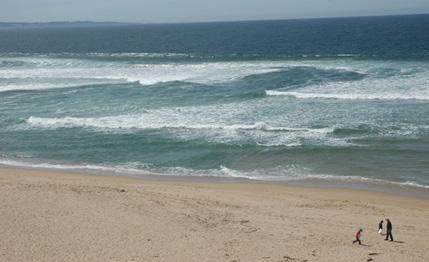



27
Sailor and Marine fatalities occurred last summer.
Accidents and mishaps are preventable, provided we assess risks and comply with laws and best practices.
Freshen up on common summertime injuries due to:
– Motor vehicles and motorcycles
– Heat and other weather-related activities
– Alcohol and party-related activities
– Water-related activities
– Fireworks and firearms
– Sports and fitness
– Home projects and more
Whatever you do this summer, understand and avoid preventable risks.
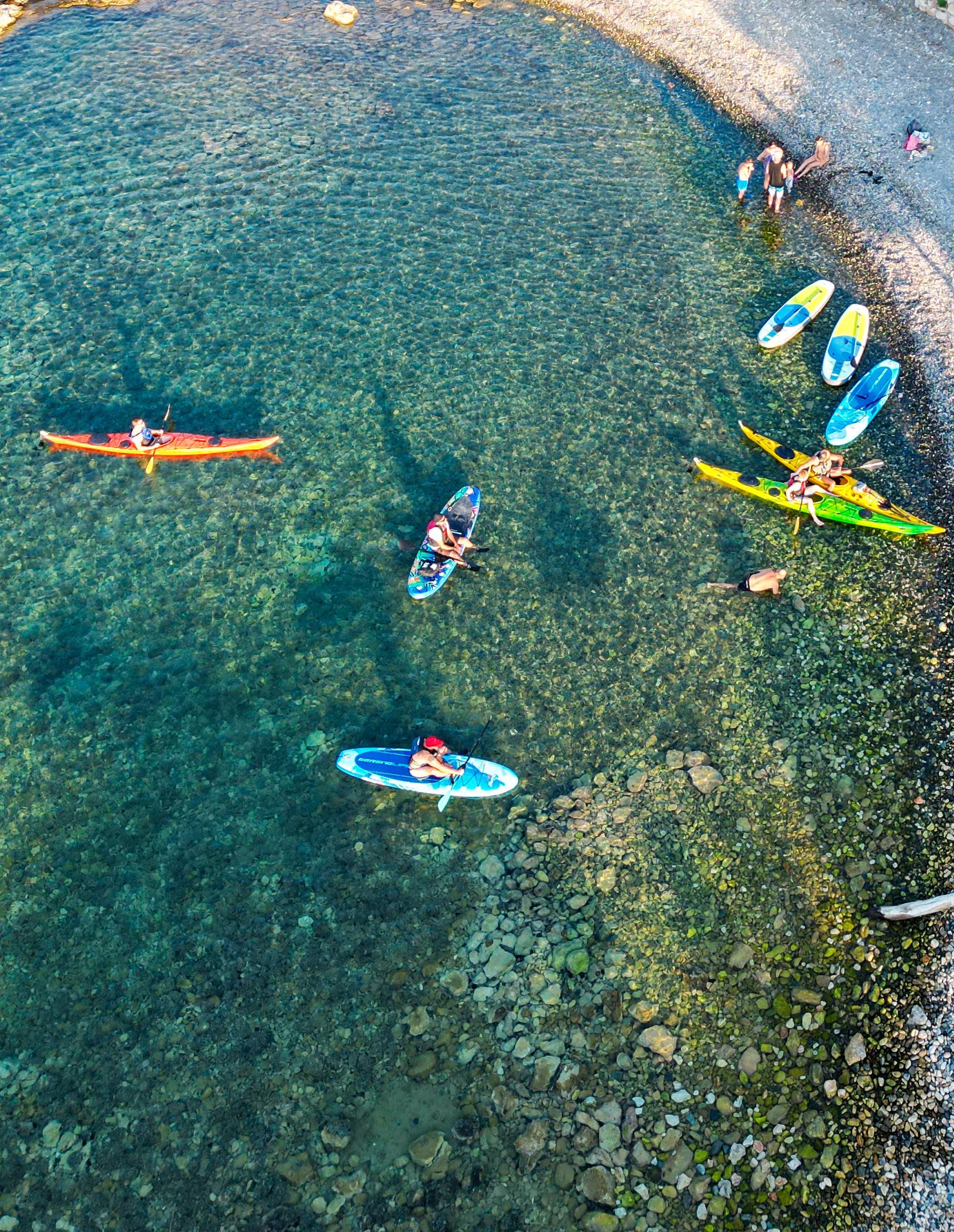

Your Safety is Critical
By Ani PendergastAdventure is anticipated this summer, but misadventure should be too. A memorable experience can be overshadowed by a trip to the hospital – or worse. Understand the risks this summer to help you minimize the chance of a good time turning bad.
Memorial Day weekend through Labor Day weekend is the 101 Critical Days of Summer. It’s the time that many off-duty accidents happen. Most people go outside, enjoy the weather with friends and family and participate in fun activities. To manage risk in any activity you should identify potential threats, find tactics to decrease harm and make informed choices.
Complacency is a common root cause in off-duty mishaps every summer. Have situational awareness with these safety tips:
Self-assess and self-correct - Recreational mishaps are avoidable. You should frequently self-assess and self-correct how you spend your time while off duty this summer. Assess the risks, remember procedures, understand your limits and comply with all laws.
Teach others to help you remember – Get help in any activity by choosing an assistant skipper or find an inexperienced friend and show them the ropes. Ensure more than one person involved is familiar with the plan of the day, knows how to use the gear or equipment properly and understands the summer activity from soup to nuts. Training others on best practices can help you remember operations, plan a safety strategy to avoid harm and what actions to take in case of an emergency.
Maximize your needs – Keep hydrated and have plenty of water available. Fully charge your phone and bring an extra charger. Bring spare gear. Wear sunscreen and stay in the shade, if possible. Dress in bright colors for the day or reflective gear in the evening. Remember to stretch and warm up your body. Stay extra prepared anticipate possible problems.
Motorcycle safety is deadly serious – About 1 in 10 Sailors and Marines own a motorcycle. Motorcyclists suffer higher rates of serious injuries and fatalities than other drivers. Are you one of the estimated 52,000
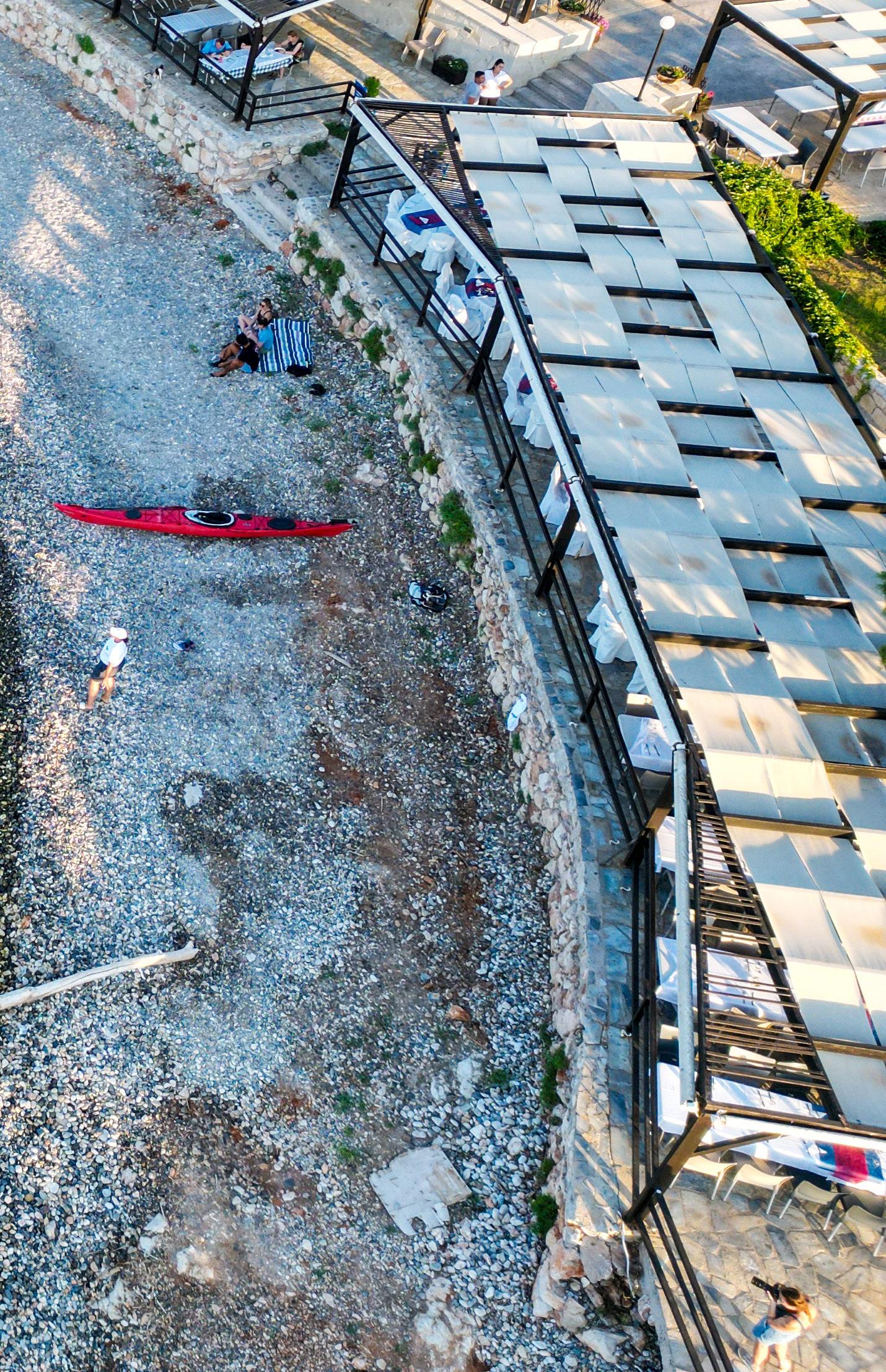
motorcycle riders? You must take the recommended safety courses and have a Department of Transportation-approved helmet, long sleeves, long pants, full finger gloves and boots that cover the ankle while on a ride. Additional armor could be lifesaving.
Simply drive – Look both ways, twice. Check the blind spots, twice. Be vigilant and aware. Any distraction is not multitasking, it is distracted driving. Keep plenty of distance between you and the car or motorcycle in front of you. Remember to reduce speed, arriving alive is more important than arriving early. Follow the rules of the road, never drink and drive or drive while sleep-deprived.
Suspect and inspect – Spring cleaning should be a detailed inspection. As your summertime gear gets unpacked after the winter, inspect and clean before use. Your grill, dive gear, motorcycle, sports equipment and more could have been stored damaged. Check the fit of all shoes, clothes and wearable gear. Purchase new tools or gear if anything is unsatisfactory or damaged. A deep clean and double check can safeguard against potential risks.
Renew your research – Has anything changed from last summer? New resources and trainings are always showing up online. New laws and standards might be enacted. Check your route to make sure nothing has changed either. Read the owner’s manual again or take a refresher course.
Injuries and fatalities - Reported injuries and fatalities during last year’s 101 Critical Days of Summer time period:
122 – Sport and fitness activity injuries
27 – Vehicle and motorcycle fatalities
7 – Water related activity injuries
The 101 Critical Days of Summer is not about force preservation. It’s the Navy and Marine Corps' reminder to you that staying safe reduces your stress, personal harm or worse for you and your family. Take a beat and think it through this summer. The life you save may be your own. •

can be extremely effective in changing command safety cultures, but its impact is fleeting. It’s not a sprint, but a marathon. Messaging must be consistent, relevant, wide-spread, and constant to remain
SAFETY DOESN’T COST - IT PAY$
Article byTHE IMPACT OF DEDICATED SAFETY PROGRAM$
Jason MacDonald, Safety Program Administrator, Marine Corps Installations Pacific – Marine Corps Base Camp Butler
Shawn Curtis, Safety and Occupational Health Specialist, Commandant of the Marine Corps Safety Division
Capt Baylen Smith, Ground Safety Officer, Commandant of the Marine Corps Safety Division
The following case study in Okinawa’s Water Recreation Safety program showcases the effect that the right person, at the right place, with the proper resources can have a significant, positive impact on military organizations.
Safety programs, when managed effectively, equip commands to drop their mishap rates and preserve their readiness. In this case study, over a 23-year span, Okinawa dropped from 30 ocean-related fatalities over a collective nine years without a Water Recreation Safety Program Manager in place to 12 ocean-related fatalities over a collective 14 years with a program manager.
Qualified and dedicated individuals make a difference in the impact and effectiveness of safety programs and supporting initiatives.
- Safety information is not demand-driven, it is supply-driven. Commands must supply safety information and promotion via easily accessible means to both be used and be effective. Information management has never been more important to safety than
Continuity in programs will ensure that they remain effective and relevant. We don’t leave gaps in our security so why should commands do the same in safety? Gaps within our safety programs and initiatives leave commands vulnerable to the effects of inattention and complacency.
Policies in safety provide commands and their personnel the structure, requirements and guidance to perform both on and off-duty activities safely. As the force continues to change, policy will preserve the Fleet Marine Forces and enable us to transition to address the challenges of tomorrow.

Without educating and training our personnel on the hazards and dangers they face; programs will not be effective nor bought into. We need our personnel to see tangible gains from our programs and policies to be relevant and effective.
Safety messaging and engagement can be extremely effective in changing command safety cultures, but its impact is fleeting. It is not a sprint, but a marathon. Messaging must be consistent, relevant, wide-spread and constant to remain effective.
Safety information is not demand-driven, it is supply-driven. Commands must supply safety information and promotion via easily accessible means to both be used and be effective. Information management has never been more important to safety than it is today and its utility will only increase.
Safety programs are not cut and dry. They require constant innovation, adaptation, and refinement to remain effective for the complex problems faced by modern military organizations. As the force shifts its activities and structure, we will need to continue to innovate and adapt to stay ahead of the challenges of tomorrow.
How do you measure the impact safety can have on an organization?
Profit-oriented organizations typically measure the impact of their safety programs by how much money they saved each year, such as measuring drops in worker’s injury compensation payouts, lower maintenance costs and lower insurance premiums paid due to their safety record. In contrast, people-oriented organizations measure the impact of their safety programs by measuring drops in fatalities, lower injury rates and decreased time away from work.
Military organizations, a hybrid of sorts, are predominantly people oriented. However, it would be naïve not to acknowledge that it is also oriented on its finite, allotted resources as well. As such, the Marine Corps measures the impact of safety in the number of lives saved and the amount of resources preserved, measured from year to year.
The Water Recreation Safety Program in Okinawa is a clear case study in the repeated impact a simple, low-resource safety program can have on preserving the lives of service members and readiness of military organizations. Over a span of 23 years, the Water Recreation Safety Program drastically reduced drowning trends in service members across three distinct periods on Okinawa.
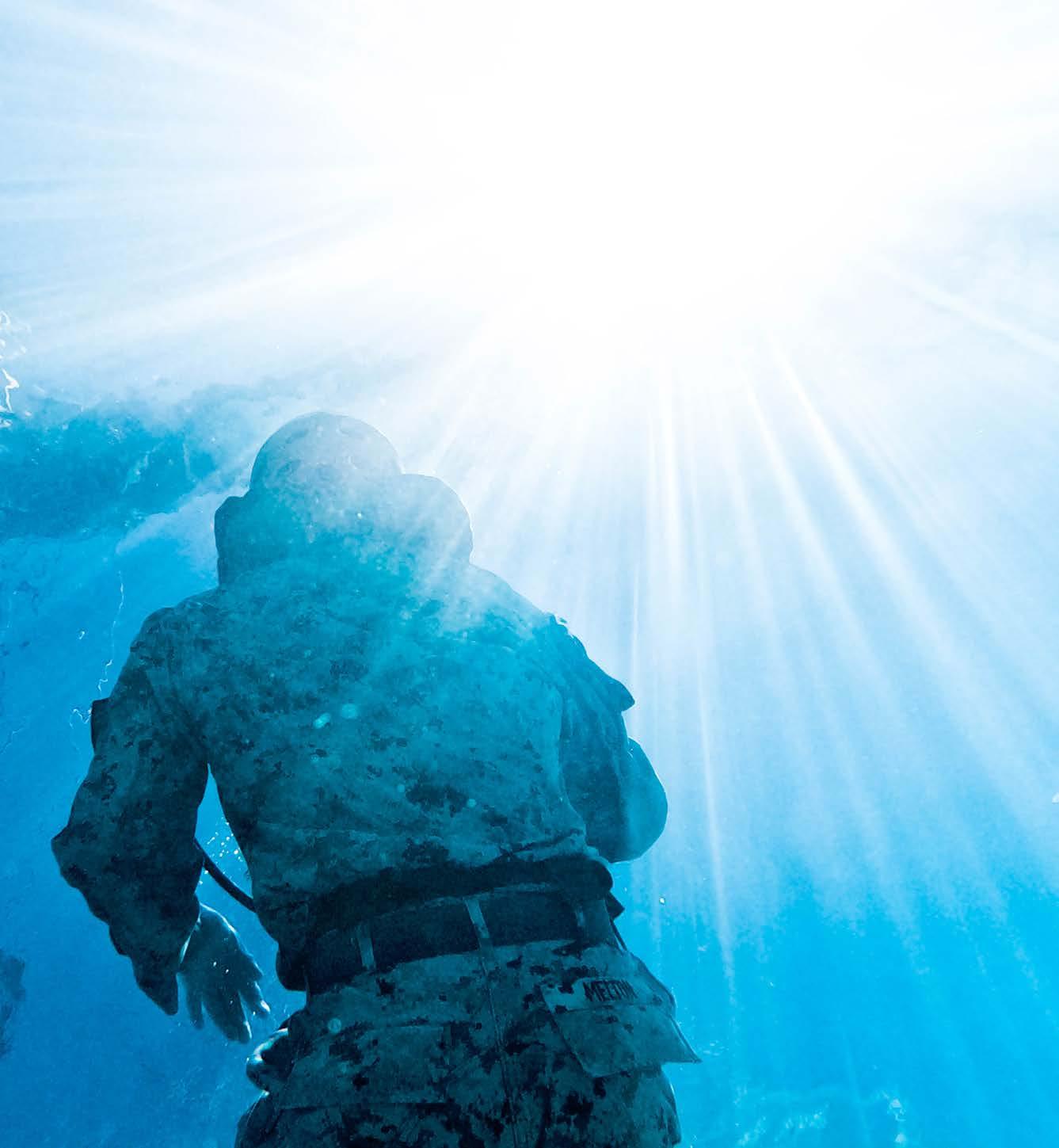
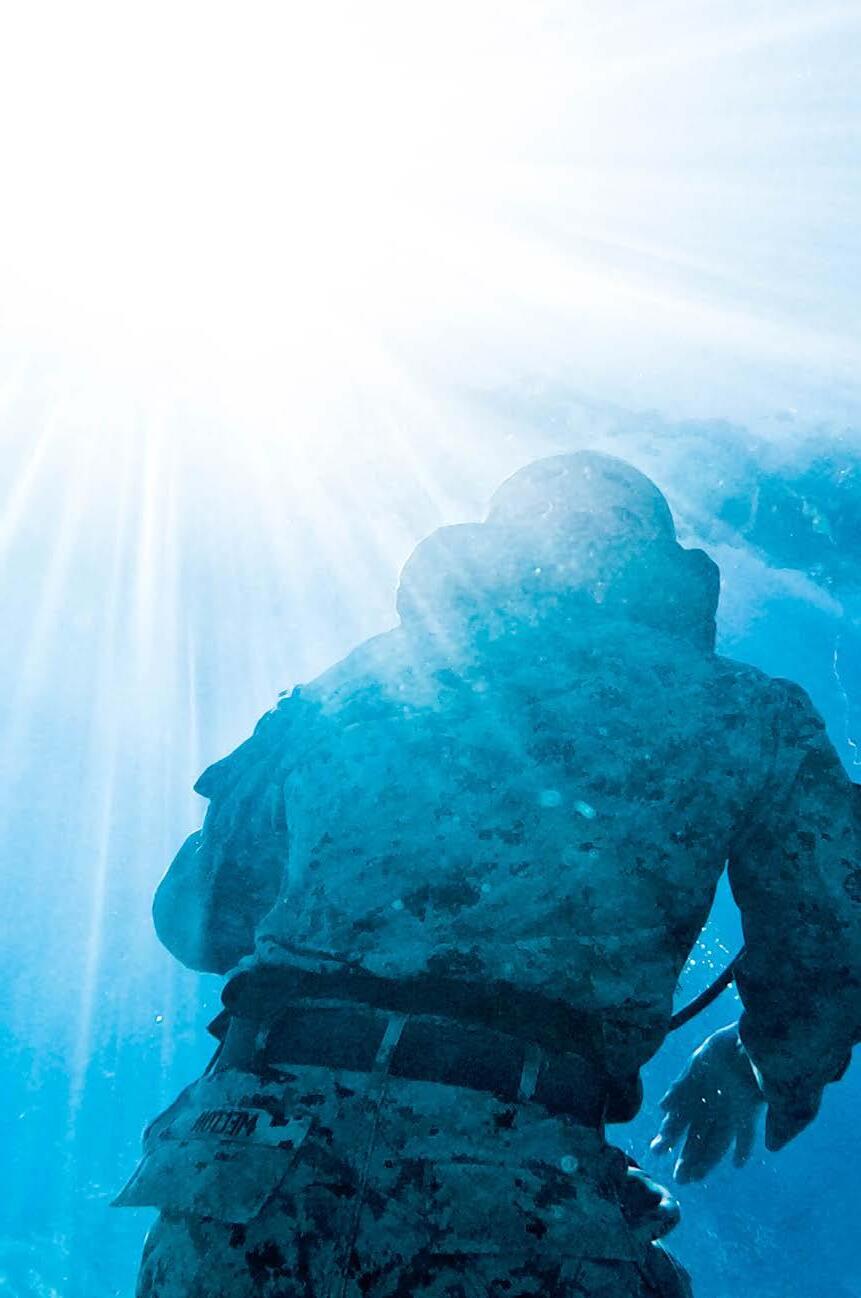
OKINAWA WATER RECREATION
SAFETY CASE STUDY
Okinawa is a tropical escape of the western Pacific, boasting world-class sportfishing, scuba diving and offering excellent opportunities for beachgoers, surfers, snorkelers and more. Okinawa also houses some of the most dangerous waters and marine environments on earth, offering deadly rip currents and treacherous sea states. In locations like Okinawa, where most off-duty recreation revolves around water activities, ocean mishaps are second only to private motor vehicle accidents. Recreational drownings pose a significant and concerning challenge, particularly at military installations near the ocean. Depending on experience and background, service members stationed in or deployed to Okinawa can be wholly unfamiliar and unprepared for the coastal hazards and conditions present. This fact underscores the urgent need for effective water safety measures, tailored to the unique coastal environments where Marines and Sailors are stationed.
As a rule, individuals unfamiliar with coastal environments are more vulnerable to succumb to water-related mishaps and drownings. In Hawaii, for instance, over half of all fatal ocean drownings involve visitors to the islands, highlighting that individuals who lack experience in marine environments are at heightened risk. Similarly, on Okinawa, most ocean mishaps and drownings involve either domestic Japanese tourists or newcomers to the island. The bottom line is this: The uninitiated are at higher risk during ocean recreation. Given the transient nature of the military workforce, service members are included in this at-risk demographic.
The genesis of the Marine Corps Installation Pacific – Marine Corps Base Camp Butler (MCIPAC - MCBB) Water Recreation Safety Program can be traced back to the early 2000s. After a series of preventable service member and Department of Defense (DoD) civilian employee drownings off Okinawa’s coastline between 2000 and 2003 (11 in total), the MCBB Safety Office solicited the expertise of a water safety professional, Shawn Curtis, to counter the drowning endemic. Curtis, a Safety and Occupational Health (SOH) specialist who previously served as Marine Corps Community Services (MCCS) Aquatics Manager for northern Okinawa, was reassigned as the Water Recreation Safety Manager, a collateral duty, in March 2003. His task: To develop the Recreational Water Safety Program, a first of its kind within the Marine Corps.
Curtis’ qualifications included: Former enlisted Marine Combat Instructor of Water Survival (MCIWS);
American Red Cross certified Lifeguard Instructor, Waterfront Lifeguard Instructor, and Water Safety Instructor and over a decade of experience in Okinawa’s surrounding waters.
Since 2000, Curtis collected comprehensive data on recreational drownings on Okinawa as part of his duties as Aquatics Manager with MCCS, providing valuable insights into the scope of the issue and informing program development. This proactive approach to data collection and analysis laid the groundwork for evidencebased decision-making to develop a comprehensive Water Recreation Safety Program. Recognizing the need for focused attention on this critical issue, the new program manager focused the program along three lines of effort: policy, education and messaging.
Before 2003, Okinawa did not have any robust ocean safety-related policies instituted across the island. Working with III Marine Expeditionary Force leadership, a Marine Corps ocean safety policy was implemented and enforced across the island on April 15, 2004. The policy provided commanders with the requirements and guidance to ensure Marines, both those inbound and those already stationed on the island, understood the requirements to capitalize on aquatic recreation on Okinawa. Concurrently, all commands across the island took part in ocean safety education, learning about the various hazards and indicators of rip currents and dangerous sea states present off Okinawa’s shoreline. In addition, all dangerous areas or regions, where drownings and mishaps were most likely to occur, were designated as hazardous areas, communicated to all military personnel on the island, and marked with bilingual warning signage. Finally, a comprehensive messaging and program marketing campaign took place across the island, targeting service members. Utilizing radio and television mediums of the American Forces Network (AFN), the Marine Corps broadcast educational infomercials across the island. Every Marine knew about the danger, understood the hazards and made informed decisions about their ocean recreation.
As a result of these initiatives, the Water Recreation Safety Program showcased immediate returns on Okinawa not only for the Marine Corps, but also the sister services, piggybacking off the Marine Corps' pioneering efforts in drowning prevention. Service member drownings on Okinawa dropped from 16 drownings over five years, to 10 drownings over the next decade. The Marine Corps was the greatest beneficiary, with losses dropping

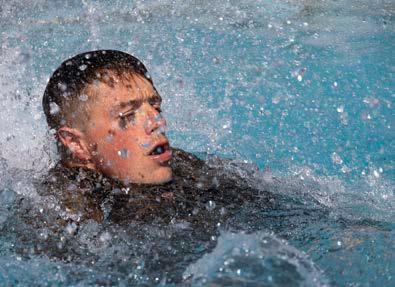
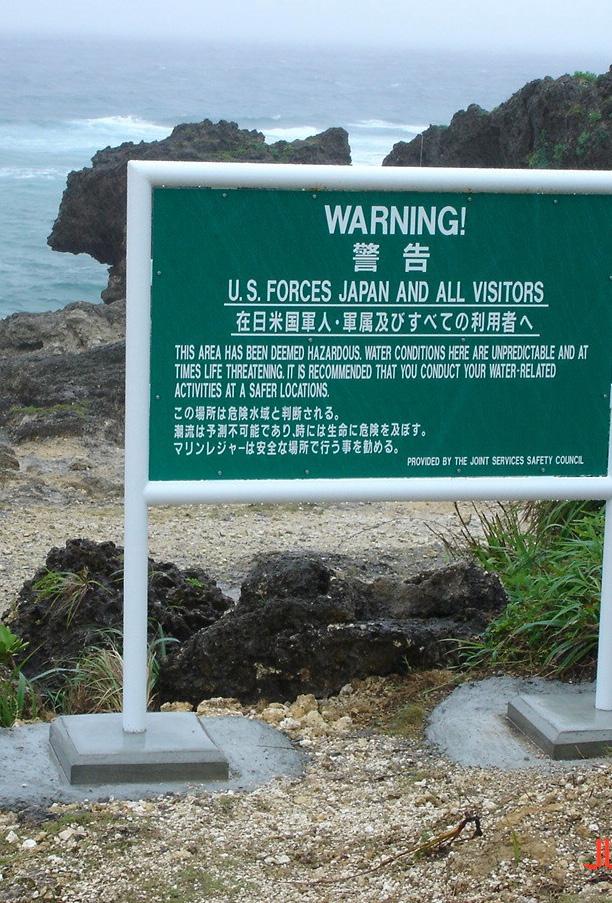
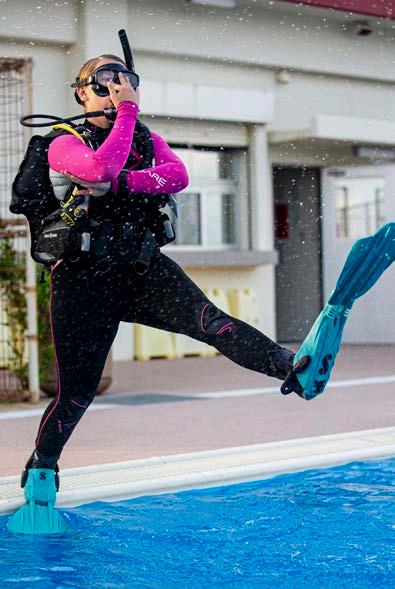

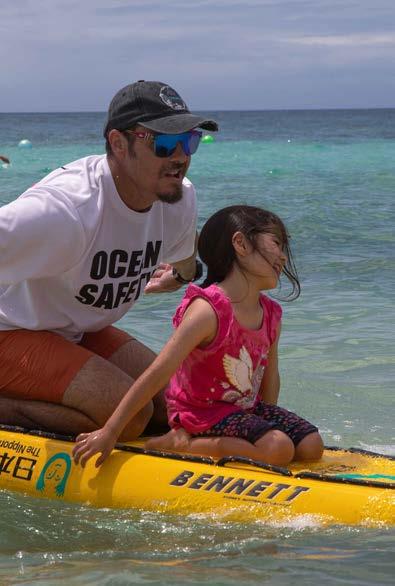
66% from nine in five years to three over the subsequent decade.
In February of 2015, the collateral-duty Water Recreation Safety Program Manager conducted a permanent change of station move, leaving the program without a manager. One year after the manager departed, between January and April of 2016, three Marines and one Sailor drowned. In response, a 30-day moratorium was placed on ocean recreation for all military personnel stationed on Okinawa by Lt. Gen. Lawrence Nicholson, Commanding General, III MEF and U.S. Forces Japan Area Coordinator for Okinawa. The intent was for the military services to pause and assess the current state of their risk mitigation posture. It's important to note the factors contributing to decreased mishap trends are not always immediately apparent, and innumerable variables may be present in any one ocean mishap. Therefore, when the previous Water Recreation Safety Manager left his position, ocean mishaps increased the year following his departure. At the time, the correlation between the billet vacancy and the increase in drownings was not immediately evident nor recognized due to leadership and force turnover, competing priorities and other factors. However, these undertakings had a more significant impact in retrospect.
In December of 2016, the MCBB Safety Office assigned David Orr, an SOH specialist, as the next collateral-duty Water Recreation Safety Program Manager. Orr’s qualifications included: Retired Marine Gunnery Sergeant; Professional Association of Diving Instructors (PADI) Master Scuba Diver certification and years of practical experience diving throughout the Ryukyu Islands. Building upon the efforts of his predecessor, the new program manager incorporated new concepts and energy into the program, especially in recreational diving, an activity increasingly favored by service members on Okinawa. Program additions include creating scuba diving emergency and first responder care cards for recreational scuba divers to carry with them during dives; developing a dive safety pamphlet; re-energizing the media and marketing campaign with new public service announcements aired on AFN television and radio and offering educational and program engagement support to commands.
Orr managed and matured the Water Recreation Safety Program over the next two years on Okinawa, seeing only one drowning during his tenure. In December of 2019, Orr departed the billet for another opportunity, leaving a gap and disrupting the continuity of the program. Within seven months of the program manager’s departure, seven drownings occurred on Okinawa. Over the two-year span the role
was gapped, a total of nine drownings occurred on Okinawa, three being Marines. This drastic spike in drownings again highlights the necessity of the Water Recreation Safety Program on Okinawa, as well as the significance and impact of a qualified and dedicated professional to manage the program.
Aside from highlighting the necessity of the program, the drowning spike between 2020 and 2021 became the impetus for change to the Water Recreation Safety Program on Okinawa. The MCIPAC - MCBB safety director, at the time Shawn Curtis, urgently advocated and petitioned for resources and funding, under the Government of Japan, Master Labor Contract program, to make the Water Recreation Safety Manager a full-time billet within the MCIPAC - MCBB Installation Safety Office. The appointment of a full-time water recreation safety manager, qualified in ocean safety, would foster long-term continuity and consistency within the program. In the summer of 2021, Marine Corps leadership on Okinawa approved the change, allotting funds to support change to the billet. The shift signaled a progressive step toward a permanent solution by the Marine Corps to address the perpetual danger of drowning on Okinawa.
In December of 2021, MCIPAC - MCBB Installation Safety Office hired their first, full-time Water Recreation Safety Manager, Jason MacDonald, a Canadian citizen with Japanese residency. While interviewing for the position, words like “consistency” and “continuity” were repeated several times regarding the needs and functionality of the program. After 31 months as Program Manager, MacDonald found consistency and continuity to be the foundational tenets to reverse drowning trends.
While relatively new to the safety profession, MacDonald is no novice in identifying hazards, utilizing risk management and teaching others about safety. MacDonald’s qualifications include: International Surf Lifesaving Association certified Surf Lifesaver; American Red Cross certified Lifeguard Instructor; Personal Watercraft Rescue Operator with Japan Water Patrol; PADI certified Public Safety Diver; Underwater Criminal Investigator Divers certified investigator and Hawaiian Lifeguard Association certified Rescue Watercraft Instructor, a qualification that requires periodic classroom instruction on risk management. Due to the allure of ocean-based recreational activities among Marines and Sailors, water safety education and training are essential to safeguarding the well-being of those stationed near the ocean. After years of development and refinement, the program education piece boils down to establishing and ingraining
water recreation safety education and promotion within routine, whether it’s a company liberty brief or a public service announcement across the entirety of Okinawa. For example, the program regularly rotates signage at beach venues and banners within military workspaces. The program manager also frequently refreshes radio and television spots, to be the “drumbeat” for water safety promotion. This effort is the most essential to ensuring the program gains traction with personnel. The daily goal is to ensure all personnel are aware of the opportunities and experiences available through ocean recreation, but also that the ocean will quickly punish poor risk decisions. Proactive measures must be prioritized and implemented strategically to ensure the safety and security of our service members.
Since 2021, several new initiatives have been implemented. For instance, the MCIPAC - MCBB Installation safety office now generates and disseminates a daily, indepth 48-hour forecast of weather and sea conditions on Okinawa. Passing along this information to 18th Wing’s Weather Flight on Kadena Air Base, the forecasts and sea conditions are set across the island for all services and broadcast on the AFN outlets hourly, 24-hours a day. Separately, in daily email to all major commands, the detailed, 48-hour forecasts are distributed to commanders for their awareness and use.
In another initiative, the MCIPAC - MCBB Installation Safety Office began an annual Ocean Expo to educate personnel on water safety through demonstrations and engagement in water-based activities and competitions. For example, local fire and emergency services have demonstrated the use of Emergency Integrated Lifesaving Lanyards systems, remote-controlled lifesaving devices that can be deployed to provide floatation for a swimmer in distress and sustain them until first responders arrive on scene. The number of local agencies which take part in the annual expo has increased to now include the Joint Services Water Safety Working group, the 11th Regional Japan Coast Guard, Okinawa Police Water Safety Division, and the Okinawa Lifesaving Association. For the 2024 Ocean Expo, the program manager will include Okinawa Lifesaving, a volunteer patrol program, that provides Marines volunteer opportunities to distribute safety information to local beachgoers.
Additionally, MCIPAC - MCBB Installation Safety Office coordinated with MCCS to publish and update water safety information on the MCCS Okinawa Liberty App. Developed by Marines and civilians for Marines stationed on Okinawa, the Okinawa Liberty App was created in 2016 to provide Marines readily available access to liberty information to improve quality of life on
the island. Since 2022, the Okinawa Liberty App now includes a ‘Water Safety’ portal that links to MCIPAC - MCBB Command water safety website: https://www. mcbbutler.marines.mil/Base-Information/ Installation-Safety-Office/Water-Safety/. This resource provides access to important water safety information such as policies, training and promotional videos, known ocean mishap fatality locations, known rip current locations and recommended beaches for recreation. The app also provides emergency contact information, useful bi-lingual phrases to communicate during emergencies and weather information. Altogether, the app provides useful water safety information in an easy access medium to make informed risk-based decisions for service members on Okinawa.
Finally, with support from command leadership, the MCIPAC - MCBB Installation Safety Office reached out to Jessica Niss, mother of Marine Cpl. Eric-John Niss deJesus, the most recent Marine lost to an ocean mishap off Okinawa’s shores. Niss was invited to share her life-altering story and experiences to Marines on Okinawa during the 2023 101 Critical Days of Summer safety pause. Her story and emotion resonate deeply with the Marines she speaks to and drives the message home regarding water safety, especially on Okinawa. This undertaking, along with the other creative measures, have paid significant returns in drowning prevention in Okinawa’s waters for the military services.
Due to the initiatives above and the constant engagement of the program, in the 31 months since MacDonald took the seat, only one, non-Marine Corps affiliated service member drowning has occurred on Okinawa, a dramatic reduction from nine drownings in the two years prior. Based upon previous history of the program, this is not due to luck. History shows that continual program refinement upon previous successes, refreshed education and messaging, implementation of new water safety initiatives, communication and collaboration with sister services and local agencies and daily engagement of the water safety program has proven to be effective and essential in force preservation. The results demonstrate that a consistent and full-time approach to water recreation safety is paying dividends in saving lives and preserving resources. Backed by years of data demonstrating the program’s effectiveness, other commands should take note and recognize the value of enhanced Water Recreation Safety Programs and other Recreation and Off-Duty Safety programs available. Utilizing experts in local recreation and regional hazards to provide essential training and education proves to be an effective means to foster
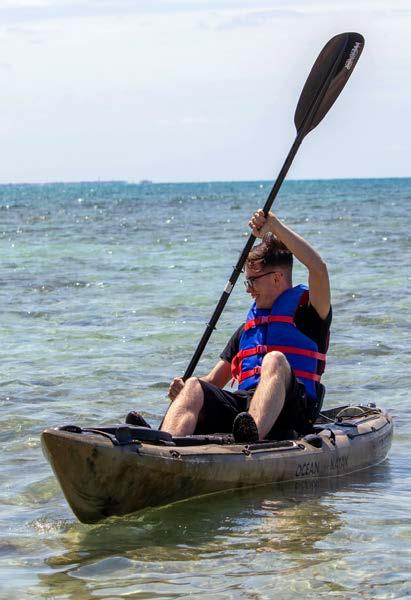





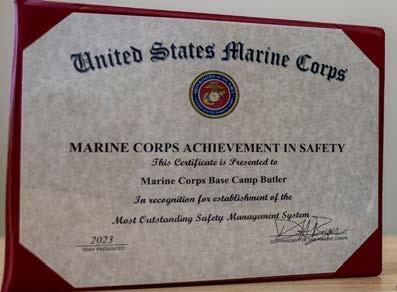

mishap prevention, save lives and preserve readiness for a given command.
In recognition of the program’s impact, the National Drowning Prevention Alliance (NDPA), awarded MCIPAC - MCBB the 2023 Community Lifesaver award for their work on drowning prevention on Okinawa.
KEY TAKEAWAYS
With a qualified and dedicated individual responsible for a safety program, in this case Water Recreation Safety, lives can be saved, commands can preserve readiness and families can remain intact.
Safety programs make a difference: During three distinct periods, a total of nine years without a dedicated Water Recreation Safety Program Manager, 30 service members and DoD civilian employees drowned in Okinawa waters. In comparison, during periods with a dedicated program manager, only 12 service members and a DoD civilian employee drowned over a collective 14 years. Safety programs make a difference and protect our service members and keep families intact.
Consistency and continuity: Lapses in security can kill. Lapses in aviation maintenance can kill. As for safety programs, lapses in coverage and continuity of program managers can kill. Every time there was a lapse the water recreation safety program manager coverage, there was a clear spike in drownings on Okinawa. Gaps in safety billets kill. Commands and leaders should ensure safety programs are appropriately staffed and tenured within the command appropriate for their mission, activities and population.
Qualified individuals: To effectively run the water safety program on Okinawa, the individuals each possessed extensive, formalized water safety training, relevant water certifications and a decades-worth of ocean experience on Okinawa to fully exploit the program’s potential. More importantly, each possessed a decade of practical experience on-island, possessing intimate knowledge of the local coastlines and hazards. Program managers need to fully understand the problem first and foremost, then have the training and experience to develop innovative and simple solutions. Providing these individuals tenure within your organization with build consistency and longevity within a command’s safety program, providing sustained long-term gains within commands.
Policy: As the Marine Corps and the nation prepare for new force structures, challenges and equipment, safety begins with policy. Policy provides the structural foundation, requirements and guidance for commanders to preserve their force
and readiness while still accomplishing the mission. As we prepare to address the challenges of tomorrow, policy will facilitate the execution of our safety programs and preserve our readiness.
Education: The greatest danger posed by hazards and dangers to our Marines and Sailors comes from being unaware and uneducated about them. No matter the activity, problem set, or mission, take the time ensure your personnel understand the risks associated and what measures are in place to protect their well-being. Education on hazards and mitigations could save a life.
Messaging and engagement: Military organizations are in a constant state of transition and turnover. Every year brings more military personnel to the shores of Okinawa. Leaders must provide constant visual (banners, signage, commercials, etc.) and audio (infomercials, public service announcements, strategic seasonal messages, etc.) ques to reinforce the safety messaging to ensure the information, promotional material and resources are at the forefront of minds. Leaders must demonstrate and provide training engagement opportunities that are relevant and impactful so personnel can develop pattern recognition of the danger and build life-saving muscle memory.
Availability and access to safety information: The availability and easy access to relevant safety information makes a difference. By empowering Marines and Sailors with the tools (policies, sea conditions and hazardous locations) and means (easy access and dissemination via phone applications or email) service members are equipped to make informed judgment calls during their water recreation. Looking outward, how is information about other safety programs consolidated, presented and available to the executors? By providing the tools and the means, we empower Marines and Sailors to make consistently sound judgment calls in any activity or mission they undertake.
Continual Refinement and Innovation: Stagnation kills. As leaders and safety professionals, we must continually refine our processes and procedures, building upon the successes of our predecessors. To maintain relevance and address the challenges of tomorrow, we must innovate and adapt. If our programs fail to adapt and change as necessary, our Marines and Sailors pay the price.
Mishap prevention is a return-oninvestment that can’t be denied. With the right person, at the right place, with the proper resources, safety programs can have a significant, positive impact.
Safety doesn’t cost - it pays. •

Ground Truth
MTVR Turn Signal/Hazard Light Switch
Article courtesy of Program Manager, Medium and Heavy Tactical Vehicles, Marine Corps Systems Command
Medium Tactical Vehicle Replacement Turn Signal/hazard light INSPECTION CRITERIA
1. Check the turn signal housing assembly retaining bolt.
2. Ensure it is secure and has not backed out
3. If loose, the required maintenance and replacement of components is necessary to get vehicle road-worthy.
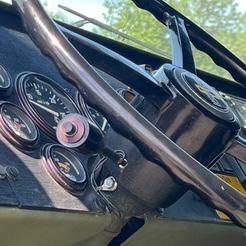
Figure 1. Turn signal housing assembly.
Under normal operation, if retaining bolt is loose:
• Vehicle operators may damage the turn signal housing assembly (figure 2).
• The steering wheel collar may come in contact with either the turn signal switch or hazard light switch electrical contacts (figure 3).
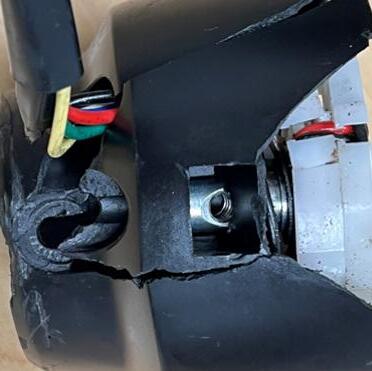
Figure 2. Damage to the turn signal housing assembly.
Location of the loose retaining bolt.
An unsecured retaining bolt caused damage to the housing assembly for the turn signal.
Normally centered on the steering wheel, the steering wheel collar was removed for illustrative purposes:

An unsecured retaining bolt caused a potential thermal event and damage to the turn signal switch or hazard light switch electrical contacts as the steering wheel collar came in contact with the electrical contacts.
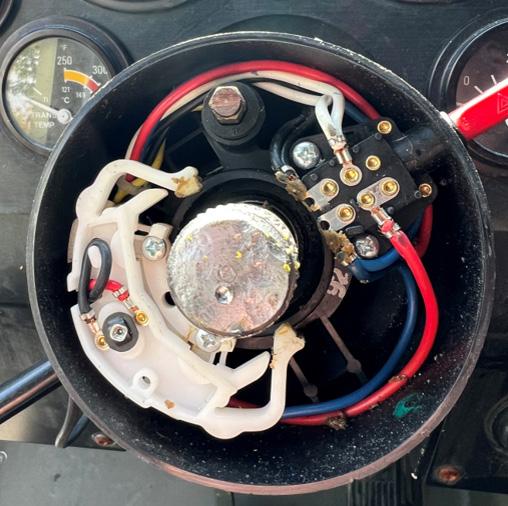
LESSON LEARNED
Secure the turn signal housing assembly retaining bolt.
Normally centered on the steering wheel, the steering wheel collar was removed for illustrative purposes:
A serviceable MTVR will have electrical contacts that are:
• Free of corrosion
• All subject components in good shape
Apply dielectric grease (Nyogel 760G, NSN 5970-01-551-5155, part # 760G 98354) on contacts before reinstalling the steering wheel.
AIRBORNE SAFETY ASSESSMENT

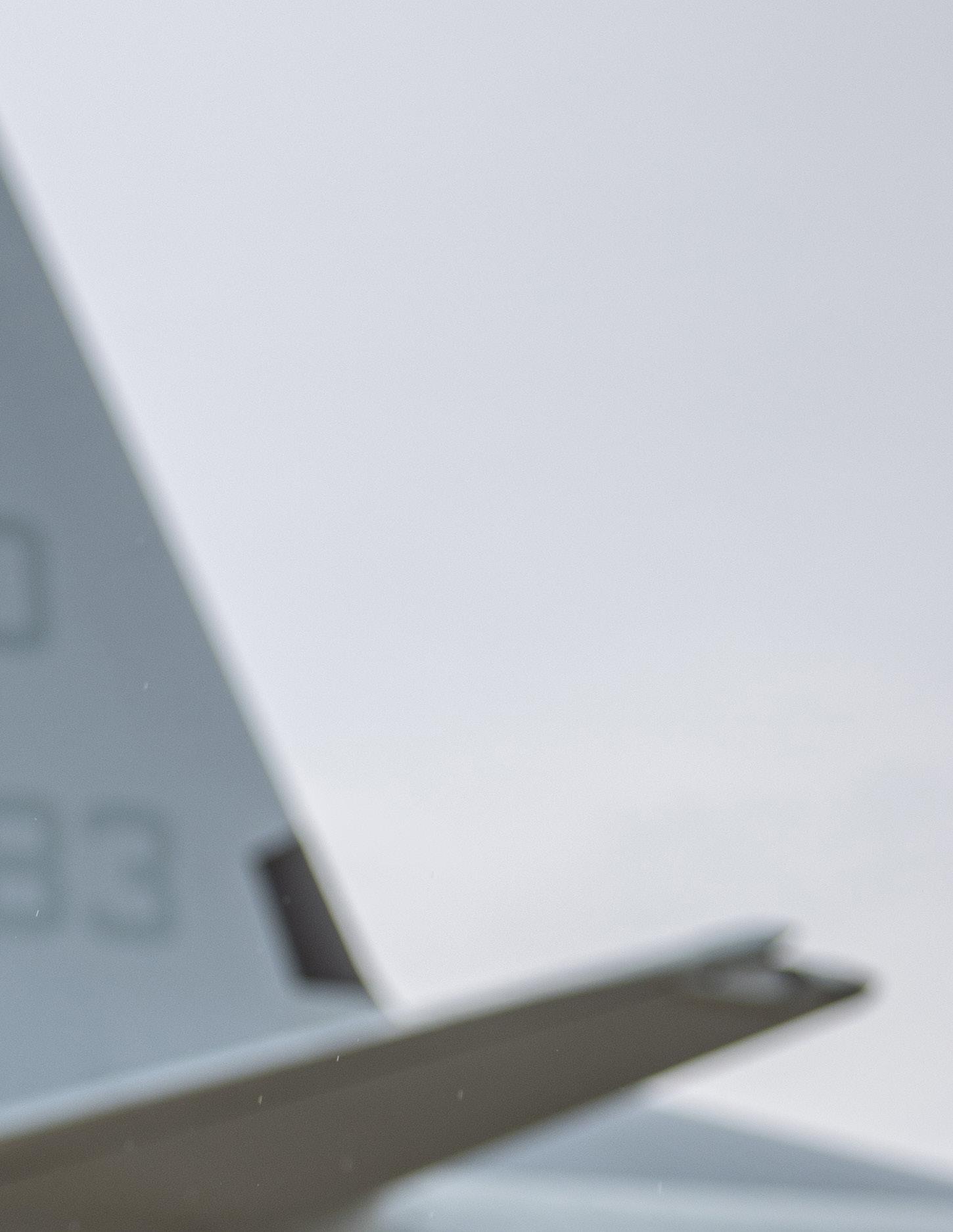
The Naval Safety Command made significant changes to the way Navy Airborne Operations Program (NAOP) inspections and assurance visits are conducted. Additionally, the command streamlined the way malfunctions and incidents are reported to the Aerial Delivery Manuals and Malfunctions Office in Fort Gregg-Adams, Virginia.
This article will identify and communicate some of the findings discovered during those revamped inspections and assessments. The findings, along with how they were discovered, are important for the force to learn from and apply to operations and daily maintenance actions.
TACTICAL FLOTATION SUPPORT SYSTEM MAINTENANCE
On July 13, 2022, the Chief of Naval Operations-Special Assistant for Safety Matters released a safety assurance letter to both Commander, Naval Special Warfare Command, and Commander, Navy Expeditionary Combat Command, identifying a lack of required maintenance and documentation on lifesaving personnel flotation equipment.
The letter also provided the following recommended corrective actions for commands that employ the Tactical Flotation Support System (TFSS):
• Immediately conduct a one-time inspection of all systems.
• Immediately begin using the 3-M program to conduct and document maintenance actions.
Educate supply departments on initial issue inspection requirements: record serial numbers and in-service dates. Inform all TFSS users of maintenance requirements, regardless of how they were issued.
Unfortunately, we are still finding commands issuing the TFSS to members individually without documenting or completing maintenance actions. Spot-checks show deficiencies related to periodic maintenance actions and initial issue inspections.
Bottom line
Ensure maintenance is being performed and documented on TFSS at prescribed intervals.
Commander, Naval Expeditionary Combat Command, and Commander, Navy Special Warfare Command, received a second safety assurance letter signed by Chief of Naval Operations, Special Assistant for Safety Matters, March 21 to take appropriate actions to mitigate risks to their forces from improperly maintained TFSSs.
We hope the recommendations will prompt corrective action, so please – help us help you.
PARACHUTE PACK- IN - PROCESS QUALITY ASSURANCE INSPECTIONS
During a parachute fatality investigation, investigators discovered pack-in-process Quality Assurance Inspections (QAIs) were not being performed per OPNAVINST 3501.225 on main parachutes employed by the command. The mishap recommendations (MISRECs) from this incident included:
• Revising verbiage in OPNAVINST 3501.225 to require all parachutes, main and reserve, have QAIs performed by qualified Special Operations Parachute Riggers (SOPR).
• Establishing non-tactical, commercial off the shelf ramair personal parachute training at the SOPR course at Fort Gregg-Adams.
• Requiring the documentation of QAIs in either the parachute log record books or Naval Sea Systems Command parachute history card.
In a follow-on, no-notice NAOP inspection in the same command, inspectors discovered QAIs were not being conducted or documented in accordance with OPNAVINST 3501.225.
How does this happen?
Unit leadership was ill-advised by their subject matter experts and told they could implement their own qualification process to train parachutists to perform pack-in-process QAIs outside OPNAVINST 3501.225 requirements. They did not realize this practice was a causal factor in a previous fatality. Leaders were also told they could simply request an exception to policy without addressing causal factors or MISRECs from the original investigation.
What’s the fix?
When causal factors are identified, recommendations are made in an attempt to eliminate, or at a minimum, mitigate identified risks. The QAI recommendations for this incident were drafted and approved at every level throughout the mishap unit’s chain of command, ending at the Chief of Naval Operations. Entire courses of instruction (COI) were established with increases in SOPR manpower for both the mishap unit and the Fort Gregg-Adams SOPR COI to ensure QAIs could be conducted independent of the parachutist and without interruption to operational requirements.
Bottom line
Follow policy and review MISRECs during all in-depth, deliberate and time-critical risk management phases of planning for high-risk airborne operations.
If you have any questions regarding MISRECs or don’t know the process for obtaining them, please email Master Chief Aircrew Survival Equipmentman Jeffrey Schmidt and Senior Chief Aircrew Survival Equipmentman Tom Moen at NAVSAFECOM_CODE40_EXW_NSW@us.navy.mil.
SIGNIFICANT EQUIPMENT MAINTENANCE FINDINGS
Finding 1: During inspection of a ready-for-issue MC-6 main static-line parachute, significant corrosion was discovered on the canopy release assembly, chest strap friction adapter and leg ejector snaps.
Recommendation: Ensure maintenance personnel conduct Technical Rigger Type Inspections, per NAVSEA SS400-A1MMO-010.
Finding 2: During inspection of two ready-for-issue MT2-XX/SL Personal Parachute Systems, severe corrosion was discovered on metal components, including main lift web friction adapters, leg ejector snaps and reserve static line snap, shackle and ring assemblies.
Recommendation: Ensure MT-2XX/SL maintenance procedures are conducted per NAVSEA SS400-AX- MMO-010 Rev. 1 with all corrosion treated prior to system repack.
Finding 3: The center cell/leading edge of both reserve parachutes were pulled out significantly and over the width reduction folds. The reserve slider was incorrectly positioned and not in accordance with the Army Technical Manual used for maintenance, TM 10-1670-335-23&P.
Recommendation: Follow the packing and maintenance requirements per Army Technical Manual TM 10-1670-335-23&P without deviation.
Bottom Line
Do not deviate from prescribed packing or maintenance procedures. Follow the applicable publications. Stop asking “Would I jump it?” Instead, strive for perfection. Remember the rigger motto: “I will be sure always.”

TOTAL REPORTED SINCE
MARCH 1, 2022
• Jumps - 36,208
• Malfunctions and Incidents - 28
MALFUNCTION AND INCIDENT ONE- LINER HIGHLIGHTS
1. Parachute landing training; emergency cut-away; main parachute; landed safely on drop zone.
2. Military free fall; off drop zone landing; fractured right tibia.
3. Military static line parachuting; improper parachute landing fall; sprained left ankle; first aid treatment.
4. Military free fall; main canopy malfunction; no injury or damage to personnel or equipment; cut away of main chute and deployment of reserve.
5. Military free fall parachute training; member fell during landing sequence; injured fingers; treated and released.
6. Military free fall; hook turn at low altitude, impacted ground; sustained lower back injury; member treated.
7. Military free fall; poor landing; injured left fibula and ankle; surgery.
8. Military free fall; bag lock; cut-away; landed safely.
9. Military free fall; bag lock; main parachute; student landed on drop zone under reserve parachute.
10. Military free fall; dual canopy deployment due to inadvertent activation of red reserve ripcord handle; main canopy loss due to cut-away; no injuries.
11. Military free fall; main canopy malfunction; service member performed cut-away and landed safely.
12. Military free fall; dual canopy deployment; injured neck and back; hospitalized.
13. Military free fall; dual canopy deployment; suspending use of PS2 system.
14. Military free fall; hard landing with MMPS; bruised right knee.
15. HAHO, CE, O2 parachute insert; off drop zone landing due to lower-thanplanned opening; jumper on light duty for seven days.
16. Military free fall; possible line over; MMPS main parachute not recovered; jumper landed on drop zone under reserve.
17. Military free fall; unstable at pull altitude; automatic activation device (AAD) (Cypress) activated; dual canopy landing.
18. Military free fall; service member conducted emergency cut-away procedures; main parachute; service member landed safely on drop zone with no injuries.
19. Military free fall; unstable at opening altitude; No damage or injury; landed on drop zone under reserve parachute.
20. Military free fall; hard landing; parachutist injured neck; surgery.
21. Military free fall; closed-end cells; cut-away main parachute.
22. Parachute operation; main closing pin torn from HDPC bridle; MMPS; service member successfully deployed reserve parachute, landed safely on drop zone.
23. Military free fall; failure to locate pilot chute, AAD fire, dual canopy deployment/landing; jumper experienced back injury; broken L1.
24. Static line parachute training; landed on runway; minor abrasions to shoulder/hands; first aid treatment.
25. Military free fall; hard landing; fractured ankle; further treatment required.
26. Military free fall; hung slider; lost main parachute; cut-away; landed under reserve on drop zone.
27. Military free fall; member impacted ground obstacle; serious injuries incurred; fatal.
28. Personnel parachute operations; towed jumper; no damage, towed parachutist uninjured; parachutist soreness.
SELF-ASSESS/SELF- CORRECT
Naval Safety Command will never know if any of the incidents and malfunctions had causal and contributing factors that were the result of residual, unidentified or unmitigated risk. ONLY the supervisors and participants at each command know if more could have been done to prevent them.
Remember – incidents and malfunctions are different and most incidents have supervisory or organizational influences that lead to or contribute to the occurrence. Malfunctions can have human errors and result in an incident, but typically they do not “just happen.” We ask that you self-assess and self-correct during your Malfunction Officer Investigations. Human factors are the leading cause of Department of Defense mishaps, and human interaction with tools, tasks, working environments and other people can both positively and negatively influence human performance. •
REMEMBER
a SERIES of events usually cause a mishap, but only ONE defense mechanism to prevent it.


Marine Corps Community Services (MCCS) provides a comprehensive and effective support system - from recruitment through separation or retirement, which supports readiness, preparedness, fitness, health, and overall quality of life. https://www.USMC-MCCS.org/
Marines with 3rd Landing Support Battalion, Combat Logistics Regiment 3, 3rd Marine Logistics Group, board a C-130 for an air delivery exercise on Ie Shima, Okinawa, Japan, June 9, 2022. (U.S. Marine Corps photo by Lance Cpl. Sydni Jessee)
SAFETY SPOTLIGHT
Staff Sgt. Macey D. Savageau
Recruit Training Regiment
Ground Safety Manager
Marine Corps Recruit Depot, San Diego, California

From July 2021 to August 2023, Staff Sgt. Macey D. Savageau served as regimental logistics chief and regimental ground safety manager for Recruit Training Regiment, Marine Corps Recruit Depot, San Diego, California. Savageau ensured the well-being and safety of all permanent personnel and the 20,000 recruits who pass through the command annually.
Savageau expertly juggled the dual responsibilities of both billets and was responsible for the logistics and safety functional areas of the Commanding General’s Inspection (CGI) within the command.
During her tenure as ground safety manager, she transformed a non-mission-capable safety program to a fully compliant program, passing the CGI with no program findings
or discrepancies. Additionally, she drafted and implemented the command’s first safety standard operating procedure to standardize and streamline safety processes and actions.
Furthermore, Savageau managed and oversaw several key safety projects within the command to include retrofitting fire alarms and fire suppression systems in several buildings, restoring air quality units for two facilities and resurfacing the parade and pool decks. Over the course of 15 command inspections and 30 mishap investigations, Savageau submitted and tracked nearly 100 corrective service requests to address identified hazards and hazardous conditions within the command.
SLEEP LEADERSHIP
LEAD WITH BETTER SLEEP
By Dr. Camila Almeida Consortium for Heath and Military Performance (CHAMP) Human Performance Resources by CHAMP (HPRC)How well and how long you sleep is essential to military health, wellness and performance. Most adults should get seven to ten hours of sleep every 24 hours. However, around 70% of servicemembers get less than six hours of sleep nightly, compared to only 30% of the general population.
Service members who are sleep deprived don’t perform as well mentally or physically. Sleep-deprived service members also have a higher risk of getting musculoskeletal injuries and making errors that can affect personal and mission safety. But when sleep improves, performance and health improve too. As a military leader, you can show service members that you support the value of getting enough sleep.
THE ROLE OF LEADERS IN HELPING OPTIMIZE SLEEP READINESS
A report to the Congressional Armed Services Committees recommends that the Department of Defense establish a policy to promote a culture shift that better prioritizes service members getting enough sleep. Leaders can play a vital role in this culture shift and strong sleep leadership can help.
Sleep leadership is about leading with a few facts about sleep.
Understand the impact of sleep on health and performance.
• Know what healthy sleep habits are.
• Practice good sleep habits. Encourage their team members to do the same.
Service members get better sleep in terms of quality and quantity when their leaders show strong sleep leadership. Efforts to improve sleep readiness have gained traction among senior military leaders, policy makers, educators, researchers and funding agencies. But additional change won’t come until leaders continue to learn, develop and walk the talk in sleep leadership skills.
HOW TO IMPROVE SLEEP LEADERSHIP
As a military leader, you can take specific actions to improve your sleep leadership. Here are some practical ways to do that.
Build relationships: Leaders with strong sleep leadership establish individual relationships with their team members and manage them in a way that prioritizes sleep. Build trust with a steps.
Ask service members about the quality and length of their sleep.
• Encourage team members to make sleep a priority.
Create a culture that destigmatizes service members’ need to get enough sleep.
• Share personal stories highlighting your motivation to prioritize sleep, roadblocks you’ve faced, and solutions you’ve implemented along the way.
Provide education: Strong sleep leadership also focuses on learning and sharing information on sleep readiness optimization. During regular check-ins, be prepared to share information that can help service members improve their sleep.
• Have individual conversations and team training about the impact of sleep on total force fitness.
• Encourage service members to develop good sleep habits. Educate service members on the different types of strategic napping.
• Train service members on operational fatigue management.
Plan around sleep needs and allow flexibility : When you’re able to, create schedules that allow service members to get enough sleep. It isn’t possible to train for sleep deprivation, so the best way to lessen the impact is to support service members getting enough sleep whenever possible.
• Allow enough time for sleep, rest and recovery before, between, and after all missions.
• Consider—and discuss—the impact of circadian rhythms on performance. When possible, create schedules that prioritize staying alert during the day, and getting at least some night-time sleep.
• Try to schedule service members for long-term shifts rather than in constant rotation.
• Delay physical training until the afternoon on days before shift work and night operations so service members can get extra sleep in the morning.
Keep in mind that service members might need a few days to return to a night-time sleep schedule after being on night shifts for several days. Encourage short naps during night and sustained operations, when possible.
• Create a supportive environment that supports good sleep on military installations.
• When possible, help control noise, light and temperature to optimize service members’ quality and length of sleep.
• Consider roommates or tent mates when planning shift schedules and assigning duty, so one service member doesn’t wake up others.
Encourage medical support : Suggest that service members get medical support when needed. Insomnia and sleep apnea are common sleep disorders in the military, and service members with these conditions should get help from a specialized healthcare provider. Consider the possibility of insomnia when poor sleep doesn’t improve by implementing better sleep habits
• Service members with insomnia significantly improve with cognitive behavioral therapy for insomnia.
• Encourage service members who complain of extreme fatigue, loud snoring, and gasping for air during sleep to see a healthcare provider. These are signs of sleep apnea, which can lead to other medical problems.
Learn more about sleep management and its impact on readiness with the Human Performance Resources by CHAMP website. •



Courtesy of Naval Safety Command
Your safety toolbox contains everything you need to reduce harm to the force. Understanding these tools can save lives. Recognizing and reporting small mishaps and near misses will help prevent future fatalities and preserve the force.
Ignoring safety tools diminishes our readiness by removing Marines, Sailors and civilian employees from their units and workplaces due to injuries or worse, fatalities. Maintaining a safe standard ensures personnel, equipment and weapons are at the ready and the Marine Corps maintains its sharp advantage.
All levels of the Corps, from the most junior private to the commandant, must use their safety toolbox to foster the culture necessary to prevent mishaps, the associated material losses, injuries, occupational illnesses and fatalities.
THE ABSENCE OF A MISHAP DOES NOT INDICATE THE PRESENCE OF A SAFETY PROGRAM
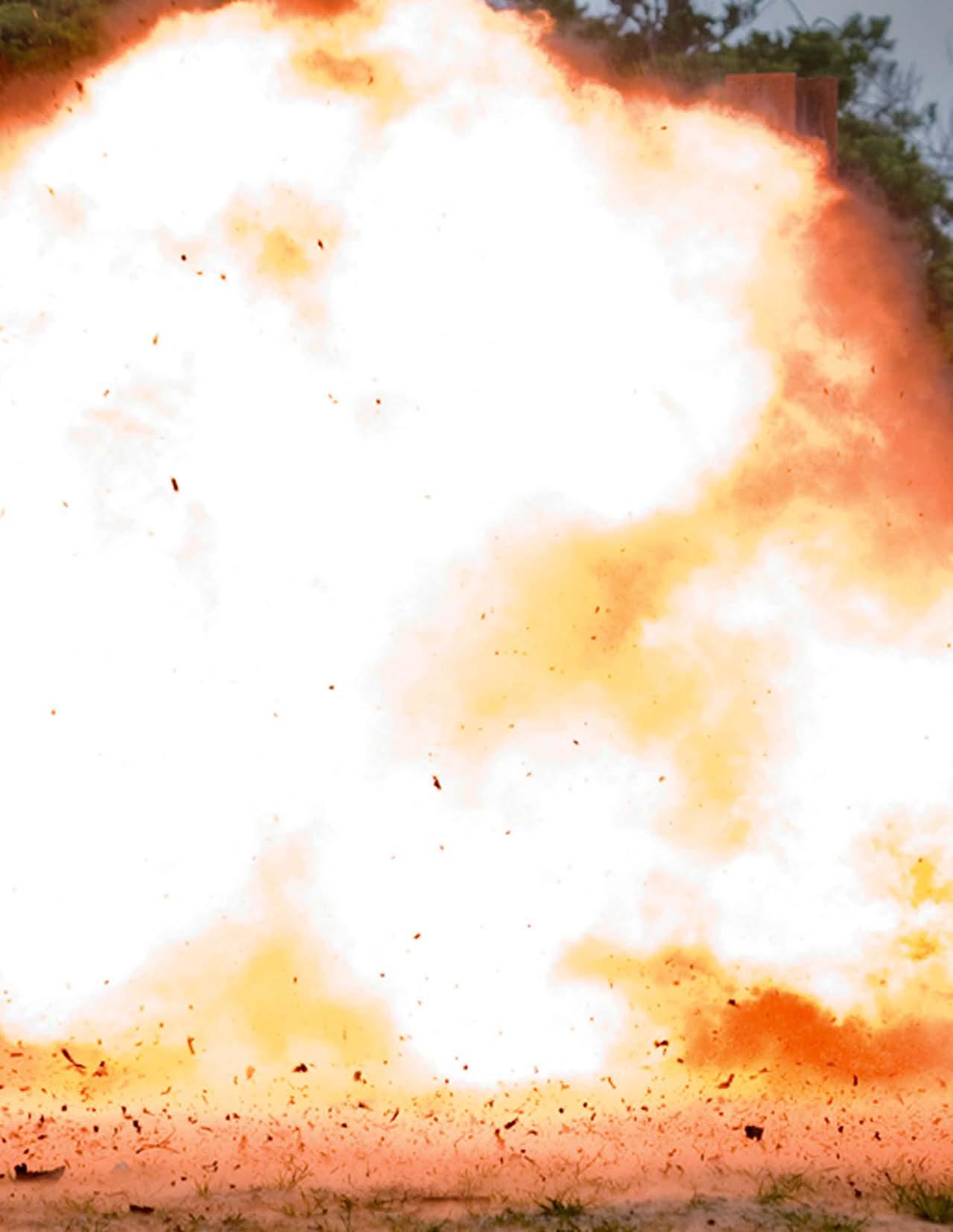

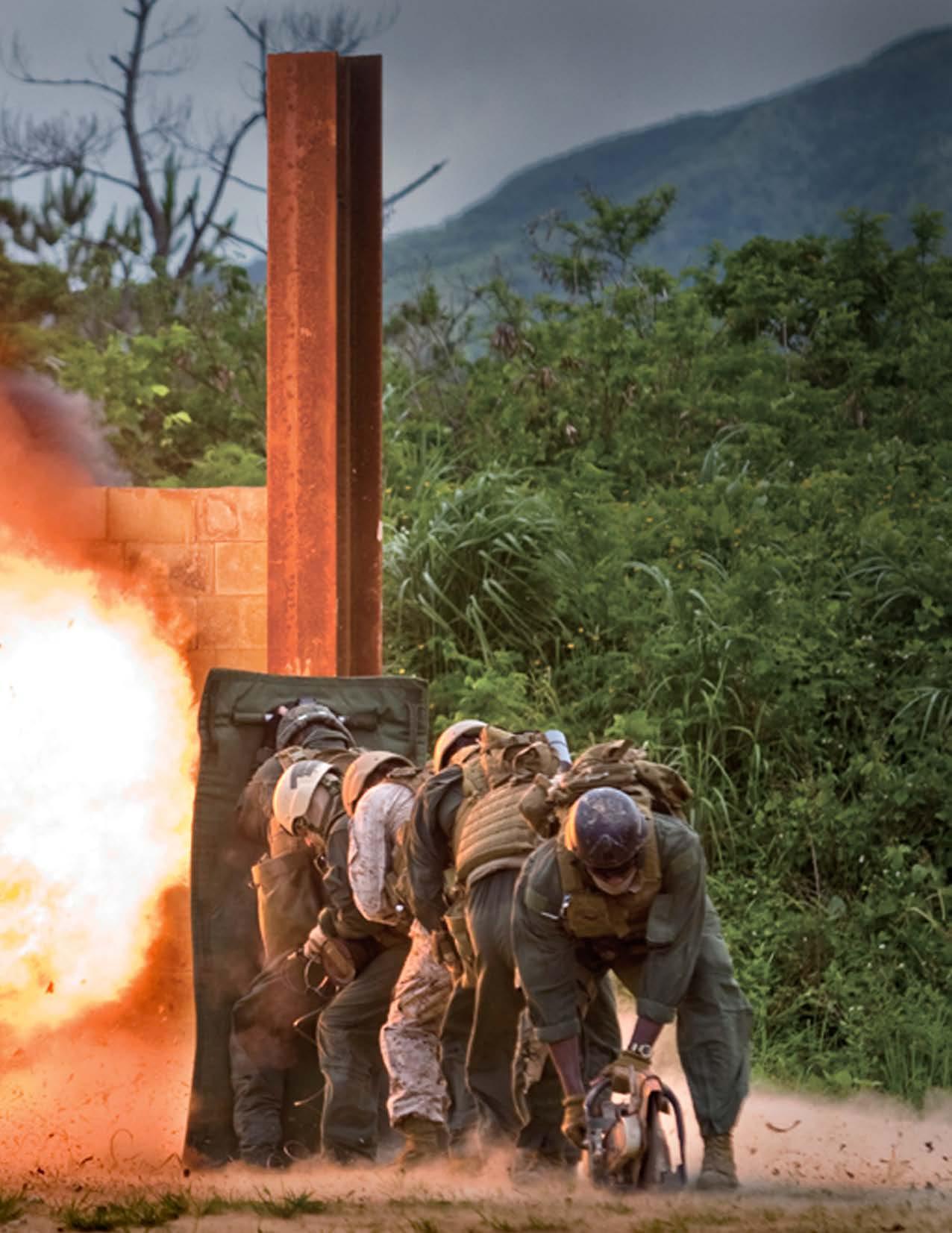 U.S. Marine Corps photo courtesy of Commandant of the Marine Corps Safety Division
U.S. Marine Corps photo courtesy of Commandant of the Marine Corps Safety Division
Human Factor
NORMALCY BIAS
Article courtesy of Commandant of the Marine Corps Safety Division
“That could never happen.” “It won’t be that bad.” “That happens to others, not me.”
SOUND FAMILIAR?
It’s a common attitude prevalent across younger Marines in the Corps. Additionally, this attitude is a significant contributor to reckless behavior in on-and off-duty activities for Marines.
It’s a mental phenomenon known as normalcy bias. It is the tendency to underestimate the likelihood or impact of a negative event or mishap occurring. The consequences of a normalcy bias can have disastrous effects. Whether it’s people trying to ride out severe hurricanes or new drivers who believe they won’t get into an accident, this phenomenon often results in disastrous consequences and sometimes death.
SIGNS OF A NORMALCY BIAS
Thinking that life will continue as it always has, no matter what. False sense of security in the status quo, even though it can change in an instant.
• Denial/disregard of hazards or warning signs.
Disbelief in consequences occurring from risky behaviors. Disregard of warnings or safety briefs by leadership. Consider mishaps in other units as irregular and dismiss them as irrelevant.
• Blatantly ignore potential threats. Complacency in routine, but hazardous tasks.
CAUSES OF A NORMALCY BIAS
Familiarity
We are more susceptible in accepting risk during hazardous, but familiar tasks.
• Routine
Routine or repetitive tasks can make us blind or numb to the dangers associated with them.
Over-Confidence/Optimism
Experience with dangerous tasks and events or lack of repercussions can build over-confidence in the abilities of ourselves or others.
Attachment to Current Beliefs
If we believe a task to be inherently safe (from routine, overconfidence, training, etc.) we do not associate any danger or need for healthy caution in these tasks and events.
Uninformed/Misinformed
If we do not understand the nature of a hazard in a task, we cannot fully protect ourselves effectively.
• Social Influence
If peers or superiors are not taking risks and hazards seriously, individuals will not take them seriously.
Resistance to Change
We naturally resist change, so we are less likely to react or register appropriately to new events or hazards.
“Nothing that bad happens in our unit.” “I’m not stupid enough to let that happen.” “Everything will be fine.”
COMBAT A NORMALCY BIAS
• Acknowledge the Uncertainties
Acknowledge that life is fragile and precious. Recognize that our society, technology, and way of life can provide us a false sense of security.
No One Cares About You More than You Do
Take personal ownership of your safety. Ask questions about hazards and dangers you may face and educate yourself on protection and control measures in place.
Plan
Immediate action plans and planning provide structure in times of emergencies or crisis. If an emergency action plan is in place for on-or off-duty activities, you will process the situation more clearly and quickly and react appropriately.
Be Calm and Rational
Face facts and register early warning signs of danger or potential mishaps calmly and rationally. With the proper mindset and openness to negative circumstances/ consequences, you will avoid panicking and denying the reality of a situation.
Don’t Disregard the Worst-Case Scenario
Anything is possible. Hope is not a good course of action, so plan for the worst-case scenario, and hope for the best.
Maintain Situational Awareness
Maintain awareness of your environment and situation. The warning signs will show themselves. Learn to look for and recognize danger and react to it.
CONSEQUENCES OF A NORMALCY BIAS
• Zero-disabled veterans planned to be disabled.
Since the beginning of FY20, the USMC has had 87 debilitating mishaps (permanent total disability and permanent partial disability) – USMC RMI-SIR Data Extraction
Most mishaps in the Marine Corps are result of human error. Historically, about 80% of ALL mishaps have human error as a factor (either causal or contributing) – CMC SD and NAVSAFECOM mishap trend analysis studies
EXPECT THE UNEXPECTED
No one can ever fill the void that you’ll leave in your family should you die or become disabled.
Protect yourselves, your battle buddies, your unit and your family. Be there for them! •
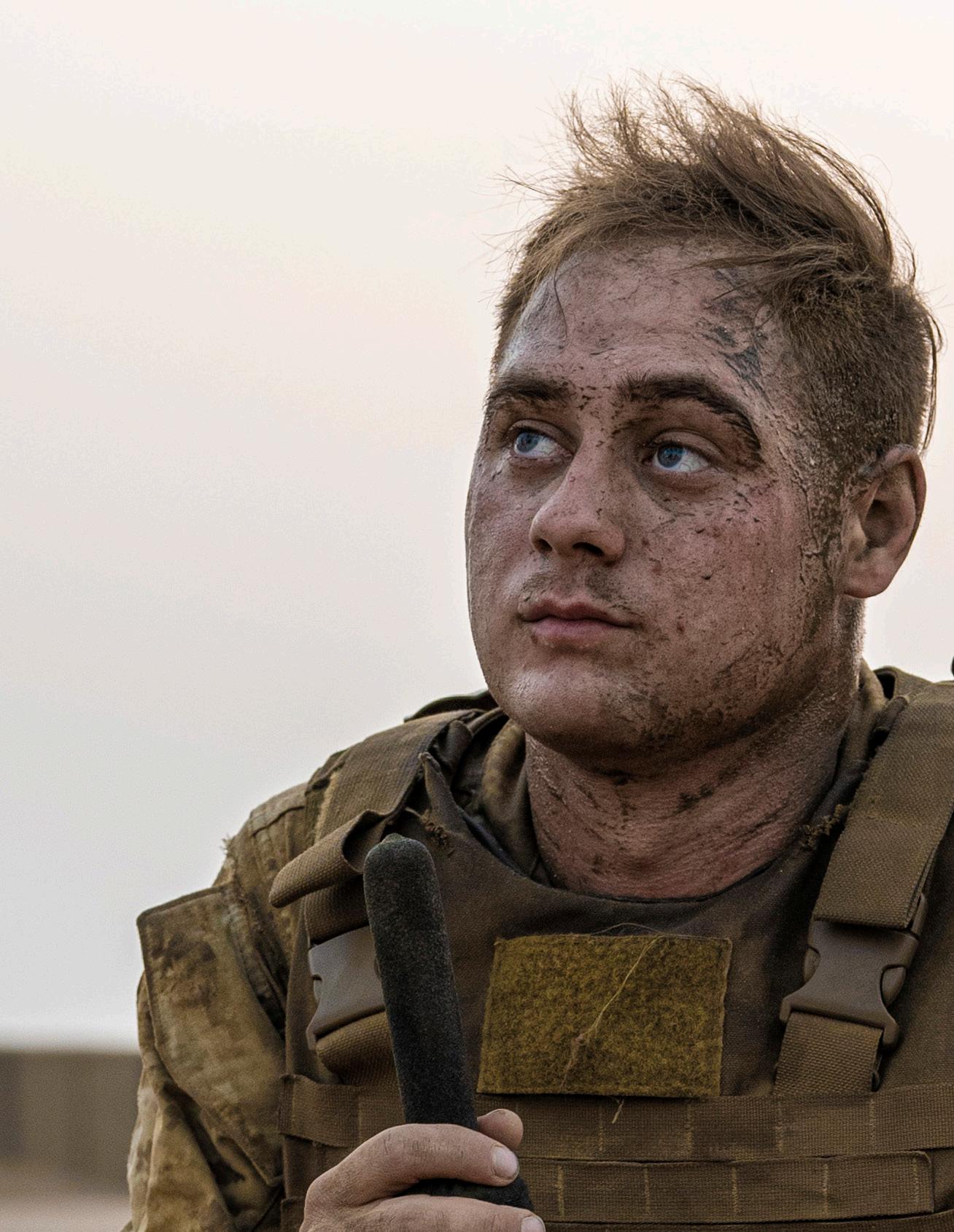
A SILENT ENABLER
Range Safety
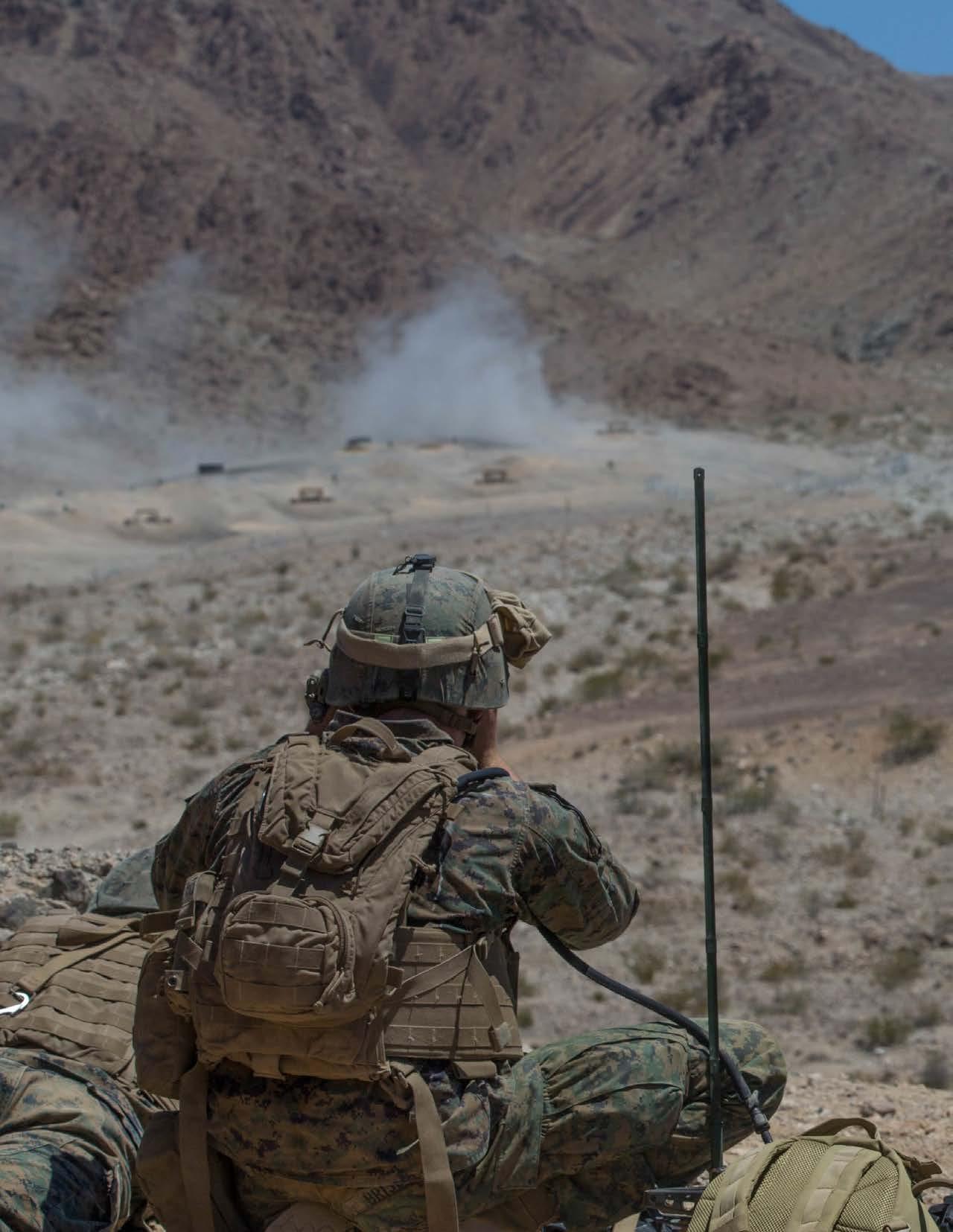
Range and Training Area Management
Article courtesy of Commandant of the Marine Corps Safety Division
The U.S. Marine Corps (USMC) holds range safety and effectiveness of training exercises paramount. Each unit’s range officer in charge (OIC) and the range safety officer (RSO) play critical roles in balancing these two endeavors. These unit-level individuals hold significant responsibilities contributing to the overall success of training operations while protecting our most valuable assets from unnecessary risk. Let's delve into the duties and obligations of each role plus the value added to any unit using a USMC range.
The unit’s range OIC, regardless of rank, is responsible and accountable for all aspects of range operations and must have the unique knowledge to fully influence the conduct of the training event. The OICs must be knowledgeable in the wide range of weapon systems for which they are responsible from rifles to lasers to precision guided air-to-ground munitions. The OIC is responsible for the conduct of the event and ensuring the training activity matches the Range Facility Management Support System (RFMSS) request. From the moment the Marines arrive on the range to when they depart, the range OIC must have the ability to influence all aspects of the training event. Suffice it to say the OIC does far more than simply schedule the event in the RFMSS and coordinate with installation range control personnel.
The OICs authority comes from their understanding of the inherent risk and the risk analysis they conduct within the risk management worksheet in the days leading up to and through the event. The OIC assesses risk by identifying impacts of potential hazards, terrain and weather conditions against the overall probability of a mishap based on the training objectives, type of weapons and ammunition and the mitigation to ensure that the training risk is acceptable.
During range operations, the OIC oversees the execution of the training exercises, ensuring the using unit is on the correct range, firing point or firing area assigned by the range control office and has the weapons and munitions approved for use on the range. In addition, the OIC must ensure all ammunition malfunctions are reported to range control. They are also responsible for ensuring adequate medical support is available as related to the installation range Standard Operating Procedures (SOP) and that required communications are established and maintained. The OIC must have excellent situational awareness as they ensure all target areas are prohibited for entry by unauthorized personnel and determine when it is safe to fire.
In addition to their operational duties, the OIC mentors and advises subordinate range personnel. They brief the RSO and assistant range safety officers (ARSO) and other personnel on the duties to be performed in support of the training event. The OIC plays a crucial role in fostering a culture of safety, professionalism and continuous improvement within the range community.
The OIC does not stand alone! The RSO and laser range safety officer supports the OIC in creating a safe and secure training event. The Marine Corps places high importance on range safety and RSOs play a critical role in upholding this commitment. The RSOs undergo extensive training to develop their expertise in range safety and management and must complete courses via MarineNet and at each installation range control office. While the OIC must be knowledgeable of the weapons system for which they are responsible, the RSO must be qualified for each weapon system for which they are responsible. This qualification requirement (MCO 3570.1C, Range Safety) means an exercise may require multiple qualified ARSOs to cover all weapons systems used during that training event.
Marines with 1st Battalion, 25th Marine Regiment, 4th Marine Division, observe the objective point on Range 400, a overhead fire infantry company training range on Marine Corps Air Ground Combat Center Twentynine Palms, California, June 20, 2018. (U.S. Marine Corps photo by Lance Cpl. Samantha Schwoch)
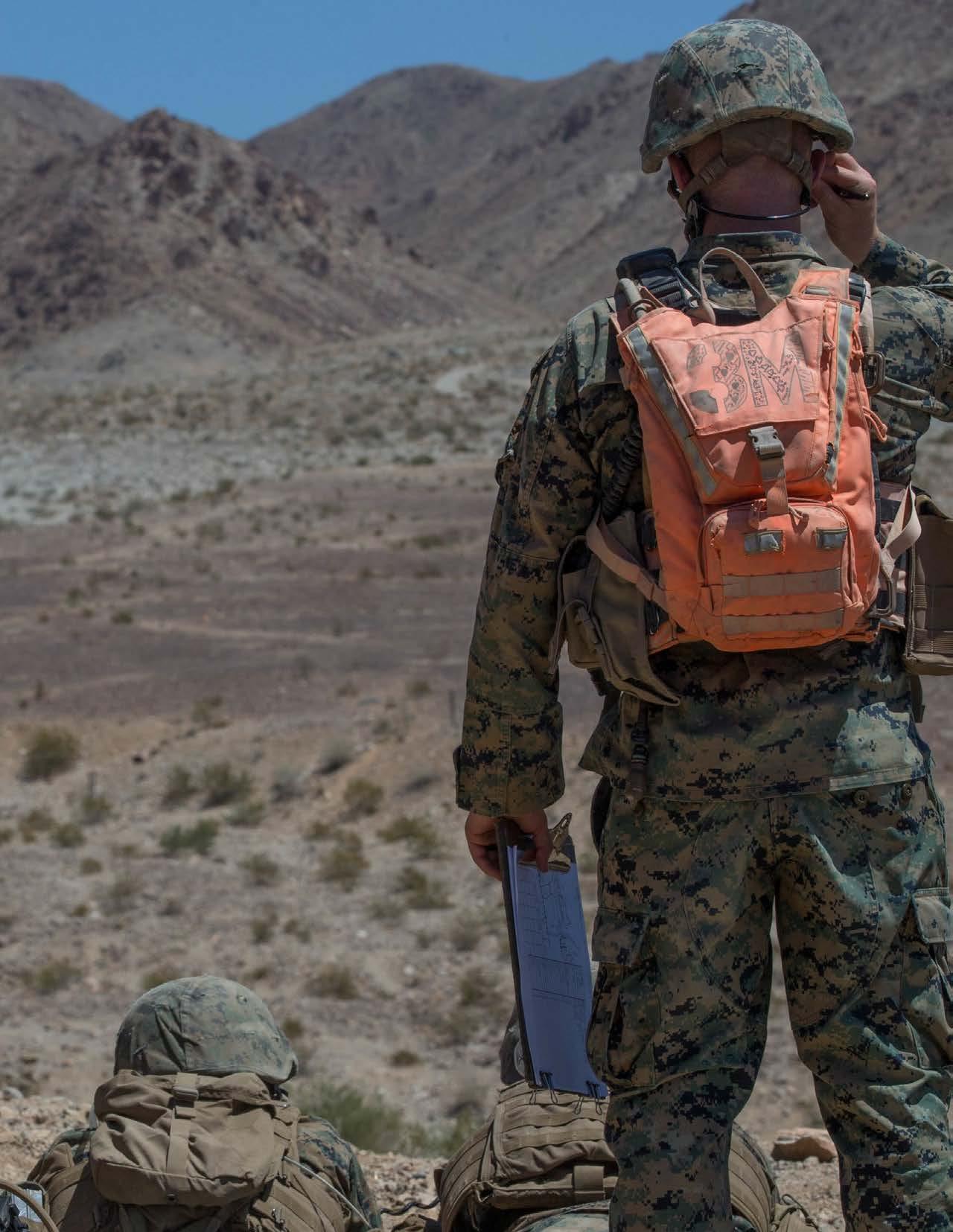
During complex events requiring ARSOs, the exercise RSO will supervise and coordinate the activities of the disparate ARSOs who are qualified on each of those systems.
The RSO’s primary duty is enforcing range safety regulations and procedures to help prevent mishaps. They are responsible for monitoring range activities so all personnel follow the established range safety protocols. Most importantly, they must be physically present on the range as they are charged with taking immediate action to correct any unsafe behavior or conditions. RSOs are also responsible for conducting safety briefings, ensuring personal protective equipment is worn and that weapons and personnel are properly positioned on the correct range and firing area as assigned by range control.
The RSO’s also verify upon completion of firing all weapons and weapons systems are safe and clear before removing them from the firing area and reporting to the OIC. The RSO’s also ensure all SOPs are followed for weapons and lasers along with knowing and observing horizontal and vertical safety limits for the range.
The OIC and RSOs teamwork maintains a safe training environment, allowing Marines to sharpen their skills with confidence and minimize the risk of mishaps. Their knowledge of the weapons systems, paired with a commitment to range safety, make them invaluable assets and contributes to the Marine Corps’ overall readiness and effectiveness.
In range safety, it is everyone’s responsibility to be vigilant and observant; if anyone notices an unsafe act or hazard, they should immediately call for a stop to ensure the safety of everyone.
Rank requirements for OIC and RSOs, refer to MCO 3570.1C. •
AIR SAFETY ASSESSMENT

FREE FALL OPERATIONS
By Senior Chief Kohl Curran, Expeditionary and Special Warfare Training Safety SpecialistWhen you think of hurling yourself out of an airplane, many people’s first reaction is fear. You probably think there are a million things that can go wrong and jumping out of a perfectly good airplane is a horrible decision. Now, for military free fall operations (MFF), add a rifle, a 30-80 pound rucksack, swim fins and an oxygen tank with an oxygen mask. What could go wrong? This article will address the many safety checks, inspections and instructions involved in helping reduce the risks inherent with MFF operations. It will also address why the skillset is so crucial.
The primary purpose of MFF operations is to conduct covert and clandestine missions. By jumping from high altitudes, and opening the parachute at low altitudes, military personnel can avoid detection by enemy radar and air defense systems. MFF operations allows for the element of surprise and increases the chance of mission success. These MFF operations are commonly used for reconnaissance, target acquisition and direct-action missions.
The training required for MFF operations is highly intensive and demanding. MFF-qualified personnel undergo rigorous physical and mental preparations to ensure they are ready for the challenges of jumping from extreme altitudes. They undergo extensive parachute training, including static line jumps where the parachute is automatically deployed upon exiting the aircraft, and free fall jumps where the operator deploys their own parachute manually.
The governing instruction for the Navy Airborne Operations Program is OPNAV 3501.225D. This instruction has been rewritten over the years due to new operational equipment, injuries and fatalities. This instruction lays down the policy for all airborne operations and safety required for the Navy. Although the Marine Corps is part of the Department of Navy, they have their own instruction for jump operations. The instruction for Marine Corps airborne operations is Marine Corps Order 3120.11A. These instructions cover the maintenance, contractor support, training, parachute systems and storage requirements to conduct MFF operations safely. Their purpose is to provide the governing rules and establish policy of responsibilities throughout the program.
Before stepping foot on an aircraft for jump operations, the service member is inspected two times. Each inspection is done independently by two separate free fall jump masters. The inspection consists of 55 visual and physical points. This dramatically reduces the risk of overlooking a simple mistake. Having two different inspections by two different people improves the chances that any deficiency will be identified and corrected. All jumpers MUST have two inspections before boarding the aircraft.
During MFF operations, personnel typically wear specialized equipment to enhance their capabilities. This includes oxygen masks and helmets to provide oxygen supply at high altitudes, as well as night vision goggles for low-light environments. The operators also carry a variety of weapons and equipment necessary for their specific mission objectives. This can include firearms, explosives, communication devices and survival gear. The equipment is carefully selected and configured to minimize the weight and size while maximizing functionality and operational effectiveness. Depending on the type of gear being used for the evolution or operation, the jump master personnel inspection is modified per the specialized equipment.
The success of MFF operations depends on the expertise and professionalism of the personnel involved. These highly trained individuals operate in extreme conditions and executing their missions with precision and efficiency, whether it is infiltrating enemy territory, gathering critical intelligence or conducting direct action missions. However, none of this would be possible without all the safety measures in place long before and up to the moment when personnel make the leap.•
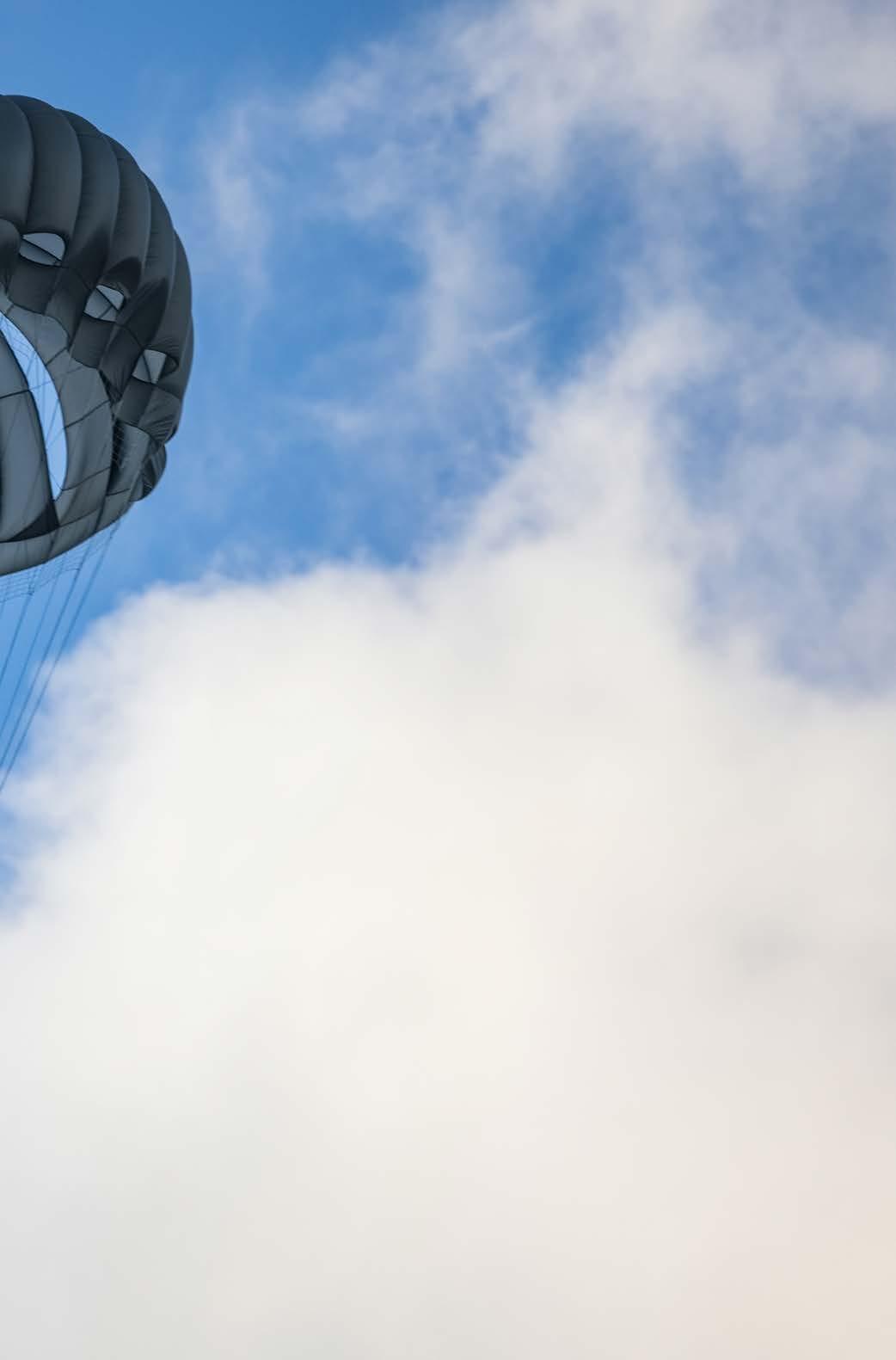
FY24 AIR OPERATIONS ASSESSMENT PROCESS
Article courtesy of Commandant of the Marine Corps Safety Division
Naval Airborne Operations Program (NAOP) assessments now incorporate Doctrine, Organization, Training, Materiel, Leadership, Personnel, Facilities and Policy (DOTMLPF-P) reviews.
This assessment, combined with an updated checklist, provides both Naval Safety Command assessors and airborne units that conduct airdrops or Helicopter Rope Suspension Techniques/ Cast (HRST/C) operations with important tools to identify and assess risk.
WHAT IS DOTMLPF-
P?
The NAOP DOTMLPF- P assessment process is defined as a non-materiel solution and reviews doctrine, existing training, organization, materiel, leadership and education, personnel, and facilities with the addition of policy reviews for conducting high-risk personnel or cargo airdrops and HRST/C operations. For NAOP assessments, it is designed to assist airborne unit commanders in identifying and assessing risks through comprehensive reviews of resources and policy.
POLICY AND DOCTRINE
Policy reviews are covered first and are generally statements of intent implemented as procedures or protocols carried out through doctrine. For NAOP, these would be governing documents, such as OPNAV 3501.225, OPNAV 4630.24, OPNAV M-5102.1, OPNAV 1500.75, NAVSEA 13512.1, NAVSEA 13482.1, COMEODGRUTWO/COMEODGRUONE 3000.1D, COMNAVSPECWARCOMINST 3000.3 & 3002, USSOCOM 350 series, local command instructions and policies.
A policy and doctrine review assesses a command’s ability to identify and adhere to policies and doctrine that would govern
NAOP or high-risk training execution. For example, if a NAOP unit is performing joint airdrops with another service, are they following the correct joint publication and obtaining approval from the appropriate level within their chain of command for any changes or deviations from naval policy and doctrine? Are they conducting thorough deliberate and time-critical risk assessments that would identify risks associated with performing airborne operations in a joint environment and briefing them to all involved during the planning and execution phase? Are personnel qualification reviews being conducted on supervisory, nonsupervisory, participant and support staff personnel to ensure all are trained and qualified for assigned roles?
Command review of doctrine should ask:
• Is there existing doctrine that addresses or relates to airborne operations execution?
• Are there operating procedures in place that are NOT being followed? Are commanders aware of policy and doctrine requirements and briefed on planned deviations while ensuring risks are both mitigated and accepted at the appropriate level before execution?
ORGANIZATION
Organization is a joint unit or element with varied functions enabled by a structure through which individuals cooperate systematically to accomplish a common mission. For NAOP, this is a unit, command or activity that employs parachuting or HRST/C as an insertion capability. Organizational NAOP reviews are mostly administrative. They will involve reviews of command structure, policies, standard operating procedures (SOP), qualification and designation processes (JQR, OJT, LOD), internal manager controls, e.g., risk-assessment approval processes, 3-M implementation and integration, etc. and shop functions for handling of support equipment, e.g., tools, oxygen support equipment, facilities management and etc.
Effective use of the Risk Management Information-Streamlined Incident Reporting (RMI-SIR) and Dive Jump Reporting System (DJRS) is evaluated during organization reviews to ensure correct reporting requirements are followed in the event of a mishap or near miss.
During an operational review, commands should ask the following:
• Are there processes in place to ensure command policy and SOPs are adhered to?
• Are there organizational problems, and if so, where are they occurring?
Is the command properly staffed and qualified to execute airborne operations?
TRAINING
Training reviews verify individuals received requisite training for their assigned roles. These reviews include verifying jump masters graduated from an approved course of instruction or parachute riggers were trained to maintain and pack fielded parachute systems. This review is unit-specific. For example, an explosive ordnance disposal unit that employs RA-1 ARAPS parachute systems would need to ensure their parachute riggers were trained and qualified by the requisite schoolhouse, and their jumpers and jump masters were trained by the appropriate authority to teach and transition personnel during high-risk events. If this occurs during parachute proficiency training, it would also initiate a review of instructor staff to ensure all were qualified high-risk training instructors, per OPNAV 1500.75.
Unit-level training reviews can also trigger additional NAOP assessments of training commands to ensure commands are adequately staffed and qualified to provide premeditated personnel parachute instruction.
Training review questions:
• Are we experiencing issues caused, at least in part, by a lack of or inadequate training?
(Continued on


Is there training that may mitigate risks during the execution and sustainment of airborne operations?
MATERIEL
NAOP equipment is the primary focus of a materiel review. This equipment includes tactical and nontactical personnel parachutes; cargo parachutes; ancillary airdrop equipment, such as oxygen systems, altimeters and jumper personal protective equipment, e.g., boots, helmets, goggles, etc., as well as HRST/C insertion and extraction equipment.
The focus of a materiel NAOP review ensures equipment is safe, suitable and effective. Are Naval Sea Systems Command ( NAVSEA) 13512.1 and 13482.1 authorized for Navy use (ANU)approved? Are units adhering to the NAVSEA Users Logistics Support Summary (ULSS No. 1170417BB-781-DO - U) and NAVSEA Maintenance Plans (MP 1170417BB-781-D - O - M1 thru M115)? Are units meeting the administrative requirements in OPNAV3501.225?
safe execution of airborne operations. Reviews of currency training, onthe-job training, job qualification requirements (JQRs), DJRS reports and course-unique instructor training occur to ensure individuals meet prerequisites and time-onstation requirements for assigned qualifications.
Leadership and education review Questions:

Do subject matter experts (SMEs) and high-risk training supervisors possess the required skills and qualifications to safely execute airborne and HRST/C operations? Do I have enough qualified SMEs to sustain and maintain current operational requirements?
• Are SMEs and supervisors qualified, current and proficient in conducting airborne and HRST/C operations?
• Are SMEs able to participate in regular professional development and self-improvement events to enable them to produce the most professionally competent individuals possible?
• Are personnel medically fit, and are trained medical professionals reviewing personnel medical readiness and status before executing high-risk training?
FACILITIES
A facilities review is completed to ensure NAOP and life-saving equipment is maintained and stored in approved buildings and storage areas. Access to ready-for-issue lifesaving equipment must be limited to authorized personnel with strict control measures. Equipment maintenance facilities should have sufficient storage space and be kept clean and wellorganized.
Internal facility review questions:
• Is there sufficient storage for all equipment?
Are parachutes and HRST/C equipment stored in appropriate, authorized areas?
• Are maintenance facilities sufficient for repairs?
Because commands may have equipment specific to their mission, all equipment waivers are reviewed to ensure deliberate risk assessments are conducted with final approval by the commanding officer.
Materiel review questions:
Are we employing only ANU equipment?
Are we maintaining our equipment per applicable technical manuals or maintenance publications and instructions?
Do we require equipment waivers or exceptions to policy for specific mission requirements?
• Is equipment stored in approved facilities with controlled access for life-saving items?
LEADERSHIP AND EDUCATION
NAOP reviews of leadership and education focus on subject matter experts. These individuals could be jump masters, air operations trainers, HRST/C masters or highrisk training instructors. Records for personnel with oversight and supervisory responsibilities are reviewed to ensure they have the requisite training, experience, adequate skills and knowledge to supervise the
PERSONNEL
NAOP personnel reviews ensure qualified, current and proficient personnel exist to safely execute and support airborne and HRST/C operations. Qualifications such as graduation certificates, currency via DJRS and jump/HRST/C manifests, and proficiency through parachutist log record books are all reviewed by assessors.

Although manpower is not a part of this review, recommendations are provided to reinforce correct fit and fill of assigned staff.
Personnel review questions:
• Do we follow a crawl, walk, run training and qualification methodology to ensure personnel are current in all facets of a given capability (day, night, land, water, equipment, exits, altitudes and landings) in all conditions?
Are individuals qualifying early or late and adhering to prescribed JQR and OJT requirements?
• Are personnel asked to assume multiple roles – supervisory or other – for mission accomplishment?
Are workspaces clean and well lit?
Is access to life-saving equipment restricted to key personnel?
DOTMLPF- P
Navy airborne operations are complex with many interrelated factors to consider before safe execution and mission success. Complexity does not suggest difficulty, but does require a thorough understanding of:
Doctrine: The way we conduct and execute.
Organization: How we organize.
Training: How we prepare.
Materiel: The “stuff” required to work.
Leadership and Education How prepared our leaders are from deck plate to senior member.
Personnel: The availability of qualified, current and proficient people.
Facilities: The workspace and physical environment.
Policy: The rules of the road.


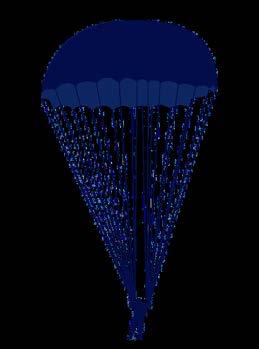
Article courtesy of Commandant of the Marine Corps Safety Division
Tactical vehicle operators are critical enablers for the Marine Corps to conduct maneuver warfare, quickly moving Marines and material across the battlespace. They ensure the right combat power gets to the right spot at the right time. Without them, our service’s ground elements move at a snail’s pace, making our tactical vehicle operators critical enablers to Marines’ success in combat.
But this capability does not come without risk. Tactical vehicle mishaps are quickly becoming a concerning trend across the Marine Corps. Since 2019, the Marine Corps has had 246 tactical vehicle mishaps across the service, with the majority occurring within ground combat elements.
How do these mishaps occur? A variety of factors can cause or contribute to a tactical vehicle mishap, either during a routine administrative movement from Camp Pendleton to Twentynine Palms or blackout sustainment driving in Okinawa. It is important to note that most factors leading to a tactical vehicle mishap are from human error. Human factors account for about 80% of tactical vehicle mishaps, either individually or collectively, making the human element the target of our mitigation efforts.
FACTORS
Since 2019, the top five factors that led to or contributed to a tactical vehicle mishap were:
1. 109 instances: Inattention, lack of situational awareness or complacency.
Inattention, lack of situational awareness and complacency are the most common factors causal or contributing to a tactical vehicle mishap. Much like “normalcy bias”, they become more likely with:
• Familiarity: As operators become more familiar with vehicle characteristics, routes, convoy briefs and dayto-day events, operators devote less concentration and attention to the task at hand. This factor makes Marines more susceptible to overlooking hazards or changes to normal operating conditions, such as weight distribution, weather or road conditions.
• Over-confidence: As operators perform tasks, such as driving or maintenance, repeatedly without incident, they develop false confidence in their abilities. This false confidence lends to operators going faster than appropriate for road conditions or vehicle mechanics skipping steps in a maintenance procedure to save time.
FACTORS & MITIGATION
• Routine: Since 2019, during the simple, routine task of ground guiding vehicles in and out of the motor pool, over (10) ground guides have been injured due to inattention or complacency, either by the driver or the ground guide themselves.
2. 77 instances: Failure to follow procedure.
Going faster than the posted speed limit in training areas, not adhering to convoy controls laid out in the convoy brief and skipping steps in a maintenance procedure are all examples of failure to follow procedures or control measures.
• Convoy briefs: Convoy briefs are one of the strongest indicators of a positive tactical and operational culture within a unit operating tactical vehicles. When done properly, these briefs ensure Marines understand their route to self-navigate, their controls to self-regulate and their mission to self-determine their actions if necessary.
• Procedural maintenance: Technical manuals are written in blood. These manuals are generated by engineering experts and refined by Marines thinking themselves above a procedure in maintenance. Every maintenance procedure imaginable has a proscribed process detailed in a manual that provides all the necessary control measures necessary to complete the job without injury. About 20% of all tactical vehicle mishaps occurred during routine unit mechanic or depot-level maintenance.
• Dispersion: Whether in brownout or blackout conditions, there’s a following distance. Following distances ensure vehicles have enough stopping distance between vehicles to stop without a collision. Not knowing the route given in the convoy brief or lack of familiarity or training in night vision devices is not an excuse to follow closely to the vehicle ahead, especially if situation dictates other measures are required.
3. 58 instances: Over-control, under-control of vehicle.
As newer vehicles are fielded across the force, leaders must ensure that we do not adopt a one-for-one mindset. These newer vehicles are larger, faster, heavier and more powerful. As we transition our tactical operators, we must ensure we provide adequate training to acclimate our operators to our new inventory.
(Continued on next page)



• Centers of gravity: As the next generation of vehicles are fielded within the service, operators should recognize that the centers of gravity are higher than the previous inventory. Greater protection from mines and improvised explosive devices (IEDs) has elevated their center of gravity, making a 25 mph curving turn in a Joint Light Tactical Vehicle more susceptible to a rollover than High Mobility Multi-Wheeled Vehicles (HMMWVs) in the same turn. Moreover, as we load more personnel and equipment into the back of our vehicles, we further elevate our center of gravity, making them more susceptible to potential rollovers.
• Weight: The next generation of vehicles are also heavier. The increased protection for personnel and extra horsepower means that vehicles need larger stopping distances to come to a complete halt. Especially, when unfamiliar or lacking in road miles in the vehicle, drivers used to HMMWVs can be unaware or unfamiliar with the actual vehicle handling characteristics of newer vehicles.
• Over-corrections: Driving experience before the military service is continually decreasing. Tactical vehicle operators may not be prepared to handle the vehicle in sand, in mud, on ice or on uneven terrain. Or they may not understand the step-action to safely get the vehicle back on the road after drifting into the shoulder without over-correcting the vehicle. Assume nothing from previous driving experience and validate proficiency through training and evaluation.
4. 55 instances: Driver, assistant-driver lacked experience or under-trained.
Lack of driving experience, training, and proficiency is one of the greatest factors contributing to a tactical vehicle mishap. Too often, tactical vehicle operators are assumed to have a constant level of proficiency once licensed, but this is an inaccurate assumption. Like all skills, tactical vehicle proficiency is perishable.
• Incidental drivers: Incidental drivers form our largest pool of tactical vehicle operators, especially within ground combat elements. However, they receive the smallest amount of sustainment and proficiency training in the tactical vehicles they operate. When stacked against other competing priorities, operator sustainment training and road miles are a low priority. What’s more, driving is not their primary job, so they dedicate their time and effort toward their primary job rather than driving. The largest number of tactical vehicle mishaps are attributed to incidental drivers.
• Sustainment training: In most of these mishaps, there was a distinct lack of sustainment and proficiency training after operators were licensed and vehicle

commanders were certified. Vehicle commanders especially were not fully aware of their responsibilities or roles in aiding the operators during vehicle operation.
• Force Design 2030 (FD2030): As we look to the future structure of FD2030, we understand that most tactical vehicle operators in the future will be incidental drivers. This structure will require commanders and leaders to balance training standards and requirements of their personnel between both primary and secondary roles better than it is done today.
5. 55 instances: Speed.
More mass at greater speeds can increase the potential for injury and damage.
• Speed: Speed is a common denominator in tactical vehicle rollovers and service members fatalities. Operators must understand that speed limits on base roadways are a safety measure, for themselves and others. Moreover, they should also understand that weather, road conditions or extra weight on the vehicle outside normal operating conditions require lower speeds.
• Rollovers: With higher centers of gravity and greater speed potentials, the next generation of vehicles have greater potential for rollovers. Operators need to understand their vehicle characteristics and operating parameters to avoid any potential for mishaps while completing the mission.
MITIGATION
Mitigation methods to address these factors are:
1. Dedicated, progressive (crawl-walk-run) training model at company/battery or platoon level.
Through building individual skillsets in operating their vehicle, leaders can ensure that operators are provided adequate training by focusing on:
• Handling characteristics: Vehicles operate differently with more weight, in mud vs pavement, going uphill versus downhill or while towing. These are invaluable skillsets and experiences for operators to possess to make them well-rounded tactical vehicle operators. Training, such as the Combat Vehicle Operator Training (CVOT) course, provides operators the opportunity to traverse various obstacles (hills, ditches, etc.) and road conditions (sand, water, mud, etc.) in their vehicle to build muscle memory, experience and confidence in their vehicles.
• Targeted, individual-based training: Tailor the training to the operators, not the operators to the training. Not all operators are created equal. Some operators will
gain proficiency and skills faster and better than others. A paradigm shift is necessary for leaders to understand that as a unit, not all the operators are at the same level of proficiency at the same time, so the unit may not be able to conduct night convoy operations during an upcoming large-scale exercise effectively. Training should not be a “one-size fits all” event where everyone does the same thing. Training must be set aside to build proficiency in tow operations for Group A of operators, convoy standard operating procedures (SOPs), tactics, techniques and procedures (TTPs) in Group B of operators, and night driving in Group C of operators to address the gaps in training based on the needs of individual operators. This approach allows leaders to maintain sustainment interval training based on the needs of their operators and mission requirements.
• Convoy operations: Convoys, when conducted effectively, are complex operations made simple through SOPs/TTPs, and training. An effective convoy is the composite result of proficiency in convoy SOPs/TTPs skillsets. Leaders must ensure that operators and vehicle commanders are fully proficient in all anticipated contingencies during convoy operations. Convoys are varsity-level operations that need to be practiced and trained to.
• Night driving: Night driving is not an inherent skillset. It requires deliberate progressive (crawl-walk-run) buildup training in order to conduct night driving effectively. Leaders must ensure that operators are not thrown into operations with night driving without dedicated proficiency and sustainment training.
2. Tracking proficiency
A lot of risk can be mitigated by tracking skillsets and driving currency for tactical vehicle operators. As mentioned, all skills are perishable. By tracking the skillsets and building blocks necessary to conduct unit actions, leaders can ensure their operators have received the proper training to complete the mission. Best example is night driving proficiency. If operators have not conducted night driving within three months of a large-scale exercise, those operators should not be slated to drive those vehicles or night driving sustainment training should be conducted before the exercise. This mitigation ensures operators and units are adequately prepared for the upcoming mission.
3. Forecasting requirements
Another measure to mitigate risk is to properly forecast vehicle and operator requirements far in advance of the operation. Too often, due to lack of foresight, operators are tagged for duty the day before stepping off on a training evolution or large-scale operation which led to a tactical vehicle mishap. Similarly, drivers can be expected to conduct night driving with a lack of sustainment training. By allocating operators and vehicle commanders to the vehicles needed to conduct the mission and comparing their tracked skillsets to the mission requirements, leaders can make informed risk decisions regarding how to train and employ their tactical vehicle operators.
CONCLUSION
Marines are our greatest resource and tactical vehicle operators are an overlooked critical enabler for our ground component. It is important to understand the factors that lead to a tactical vehicle mishap to properly mitigate them. Armed with the proper knowledge, leaders can improvise and generate solutions to the challenges of tactical vehicle operator proficiency. Remember that the right operator trained in proper skillsets provides a critical capability to the Marine ground elements and their ability to conduct maneuver warfare. •
Staff Sgt. Justin Creasman
Weight Handling Safety Manager
Marine Corps Installations
Pacific – Marine Corps Base Butler



SAFETY SPOTLIGHT
Staff Sgt. Justin Creasman is a model of excellence in the commercial weight handling program, contributing immensely to its success. His persistent dedication and attention to detail have been instrumental in implementing groundbreaking load test procedures, revolutionizing the approach to weight handling.
Creasman is the only Marine within Marine Corps Installations Pacific – Marine Corps Base Butler (MCIPAC-MCBB) that provides safety oversight of weight handling equipment. He oversees over 200 cranes aboard MCB Butler and Marine Corps Air Station Futenma.
Creasman's leadership and expertise have streamlined operations and significantly enhanced the safety and efficiency of loadtesting processes. His visionary approach to problem-solving and sharp analytical skills have resulted in a program that sets the gold standard for others to follow.
Through his tireless actions, Creasman has created a culture of accountability and precision. His ability to inspire and motivate his colleagues has fostered a cohesive and highperforming unit, ensuring that all members meet alignment with the program's objectives.
DIVE LOCKER DISCREPANCIES AND REQUIREMENTS
By Chief Petty Officer Alan Dewitt, Diving AnalystDiving safety assessments (DSA) conducted on all Marine Corps dive lockers over the past two years have revealed the top two common discrepancies are maintenance issues and medical readiness.
MAINTENANCE ISSUES
Naval Safety Command conducted 11 DSAs in the last two years and all had maintenance procedural compliance discrepancies with scuba equipment, MK-25 underwater breathing apparatus (UBAs) and compressors. Most of the Marine Corps dive lockers have a Navy diver assigned, which helps tremendously with maintenance and understanding the planned maintenance scheduling software, SKED. The dive lockers that do not have a Navy diver assigned face additional challenges because the Navy administers the maintenance program.
Procedural compliance is one of the most important factors in maintaining divers’ life support equipment. The knowledge and training associated with the SKED program are equally important and the Marine Corps dive lockers need additional training at the locations where Navy divers are not present to ensure maintenance is being completed and tracked correctly.
MEDICAL READINESS
Nine of the eleven commands assessed had discrepancies with medical readiness. Medical readiness includes periodic health assessments, cardiopulmonary resuscitation qualifications, annual skin cancer screenings, current diver physical exams signed by an undersea medical officer and annual dental exams. Medical readiness has been a problem for Marine Corps dive lockers due to manning issues and the complexity of tracking reserve divers. Most of the Marine dive lockers have a good process in place to track medical readiness but must do a better job ensuring all divers meet the medical requirements before
diving. The requirements for medical readiness pertaining to divers can be found in NAVMED P-117 and OPNAVINST 3150.27D, which all medical personnel should be reviewing while continuing to stress the importance of medical readiness to command divers.
POLICY
Another notable finding during DSAs is Marine Corps dive lockers without an assigned Navy master diver generally have more discrepancies. These dive lockers, per policy, must receive DSAs annually. Marine Corps divers must follow two separate diving instructions, MCO 3150.4A and OPNAVINST 3150.27D. Regarding DSAs, MCO 3150.4A states safety inspections will be conducted “on all Marine Corps units with a diving capability at least once every two years. Marine Corps units without a master diver will be inspected annually.” These requirements differ from OPNAVINST 3150.27D, which mandates a 15 to 21-month interval after successfully completing a Diving Operational Readiness Inspection (DORI). With the absence of a DORI being conducted on Marine Corps dive lockers, they are not meeting the same standards established for Navy diving in OPNAVINST 3150.27D. Navy and Marine Corps dive lockers have very similar requirements, but MCO 3150.4A has different requirements for safety assessments. For one, it does not require units to receive a DORI. More training and more Navy assistance could be provided if MCO 3150.4A implemented a DORI program. The DORI addition could help prevent many of the discrepancies NAVSAFECOM dive analysts have documented. •
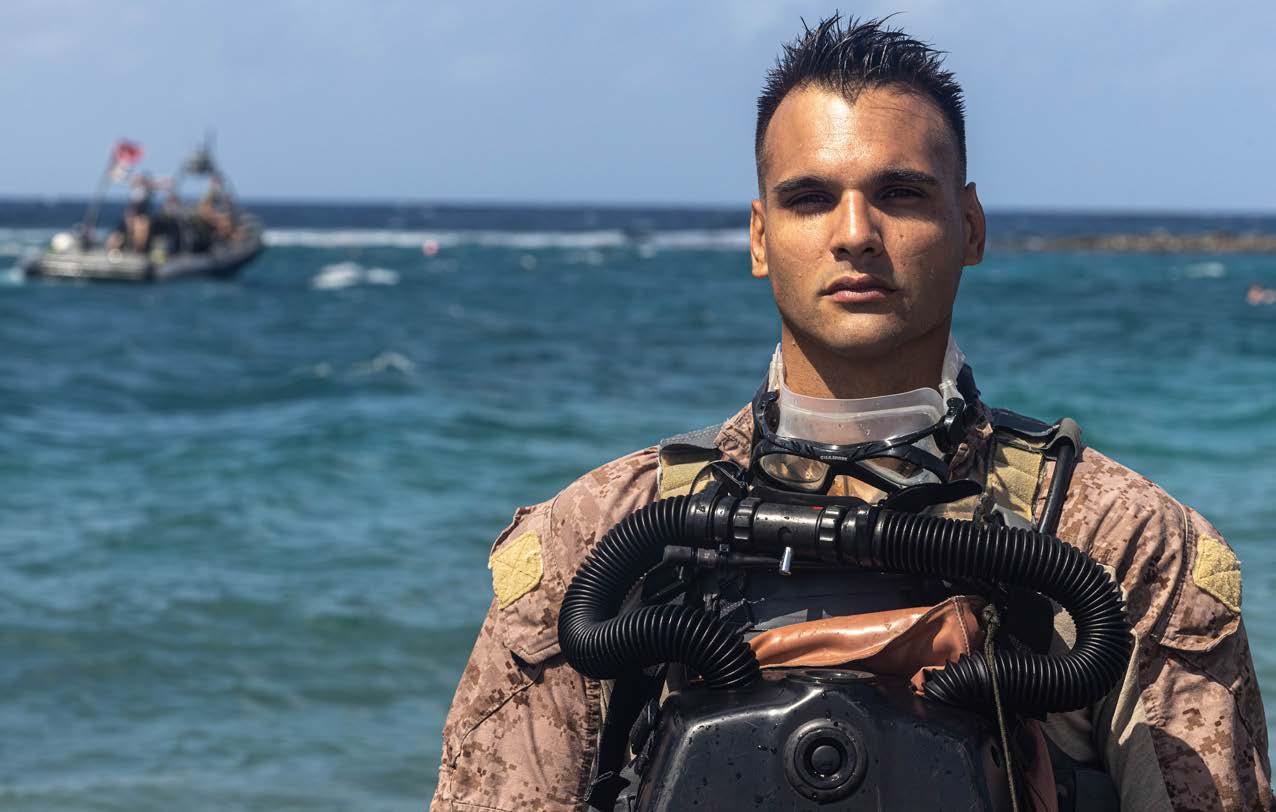
ADVANCING DIVE MEDICAL SAFETY AND PERFORMANCE
By Master Chief Hospital Corpsman Andrew TaylorDiving has captivated humanity’s curiosity for centuries, offering a unique window into the underwater world. Whether for scientific research, recreational adventure or professional purposes, divers explore the depths of oceans, lakes and seas. However, with this pursuit comes the potential for various health risks and the need for comprehensive medical analysis. Dive medicine analytics, an emerging field at the intersection of medicine and data science, plays a pivotal role in enhancing divers’ safety and performance.
UNDERSTAND THE ANALYTICS
Dive medicine analytics is a multidisciplinary approach that combines medical expertise with advanced data analytics to assess and mitigate the physical, physiological and psychological risks associated with diving. This field leverages various technologies and methodologies to collect, process and interpret data related to divers’ health, underwater conditions and equipment performance.
Key components of dive medicine analytics include:
• Biometric monitoring: Divers wear specialized sensors to track vital signs such as heart rate, oxygen levels and body temperature. These data points are continuously monitored during a dive and analyzed in real-time to detect abnormalities or distress.
• Environmental sensors: Dive equipment includes sensors to measure water temperature, pressure, depth and other environmental factors. This information helps assess the underwater conditions that divers encounter.
• Dive profiles: Dive computers record the depth and duration of each dive. These profiles are analyzed to ensure divers adhere to safe limits and avoid conditions like decompression sickness.
• Data integration: Dive medicine analytics integrates data from multiple sources, including biometric, environmental and historical information. Advanced algorithms and machine learning models are employed to uncover patterns and insights.
IMPORTANCE OF THE ANALYTICS
• Safety enhancement: Dive medicine analytics enable early detection of health issues during a dive, such as hypothermia, nitrogen narcosis or oxygen toxicity. Rapid intervention can prevent serious injuries or fatalities.
• Risk assessment: By analyzing historical dive data, this field helps identify patterns of risk associated with specific diving locations or conditions. Divers can make informed decisions to mitigate potential hazards.
• Equipment optimization: Dive equipment performance data can be analyzed to identify malfunctions or maintenance needs before they become critical, ensuring gear reliability and safety.
• Training and education: Dive medicine analytics contributes to the development of more effective training programs, simulators and safety protocols for divers at all levels of experience.
• Research advancement: Scientific research conducted underwater benefits from the vast amount of data collected through dive medicine analytics, fostering a deeper understanding of marine ecosystems and biodiversity.
FUTURE IMPLICATIONS
As technology continues to advance, dive medicine analytics is poised to revolutionize underwater exploration. Here are some potential future implications:
• Personalized diving: Customized dive plans and recommendations based on an individual's health, experience and preferences will become commonplace.
• Autonomous dive robots: Advanced analytics will support the development of autonomous underwater robots that can assist divers or perform tasks in hazardous environments.
• Environmental conservation: Dive data can be used to monitor the health of coral reefs, marine life and underwater ecosystems, aiding conservation efforts.
Dive medicine analytics represents a crucial step forward in ensuring divers’ safety and performance. By harnessing the power of data science, this field has the potential to not only protect divers from harm, but also expand our understanding of the hidden world beneath the waves. As technology continues to evolve, the future of underwater exploration will be characterized by increased safety, precision and knowledge, all thanks to the insights provided by dive medicine analytics. •
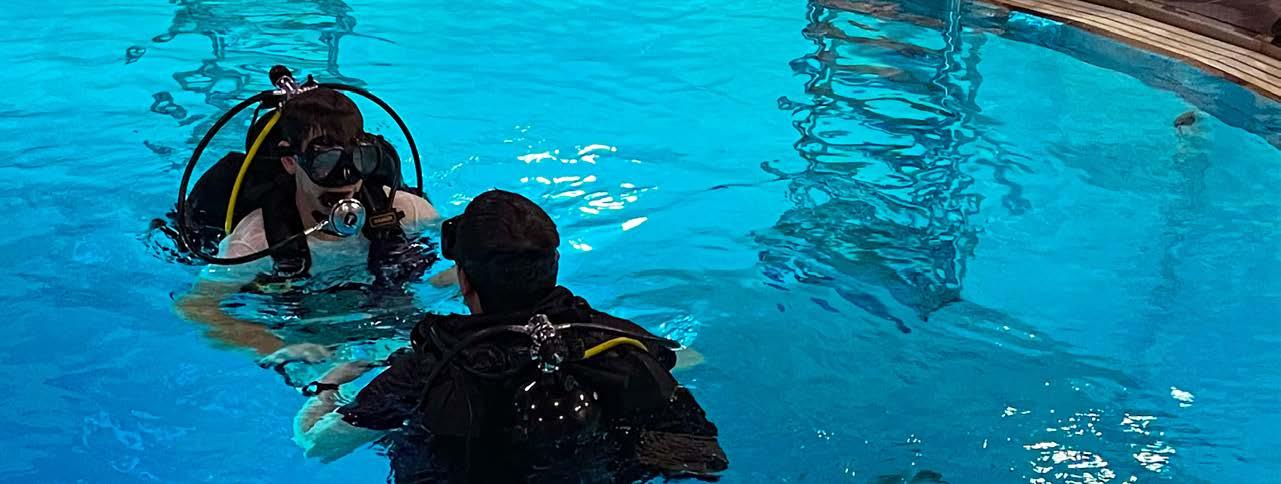
DIVE REPAIR
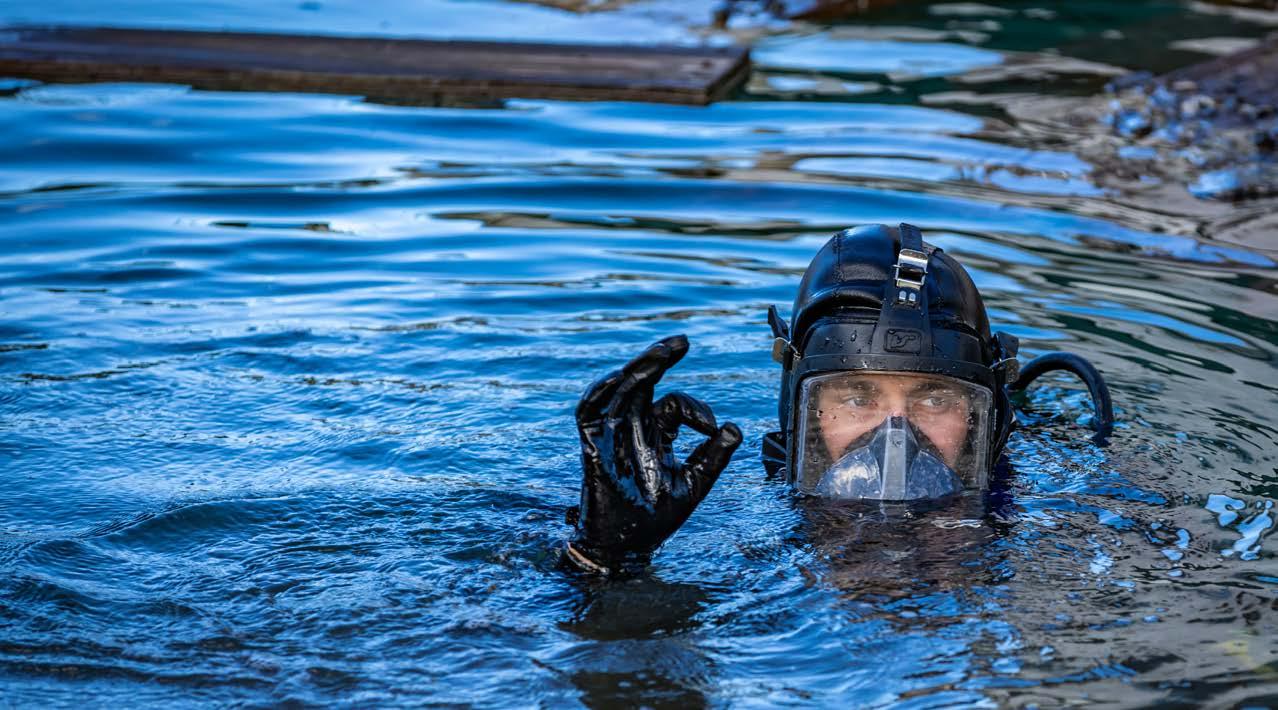
Left and right: Navy Divers assigned to Mobile Diving and Salvage Unit One (MDSU-1) conduct search and survey operations in support of Joint Task Force 50 (JTF-50) in Lahaina Harbor, Lahaina, Maui, Aug. 27, 2023. (U.S. Army National Guard photos by Sgt. Lianne M. Hirano)
Underwater Breathing Apparatus MK 20 Valve Insert Assemblies
By Master Chief Navy Diver Russ CiardielloThe Naval Safety Command’s Diving Division found unauthorized MK 20 valve insert assemblies during diving safety assessments conducted in 2023. The unauthorized valve insert assemblies were found at two of the 21 commands assessed with MK 20 capability.
In May 2021, Naval Sea Systems Command (NAVSEA)00C released Diving Advisory 21-07 (DTG 210635Z MAY 21) addressing a manufacturer’s discovery of materiel defects that could lead to restriction or interruption of the breathing gas supply. Diving Advisory 21-07 directed all fleet activities to inspect all MK 20 lever assemblies for the presence of the punch mark or dimple depicted in figure 1. The deadline to inspect was June 30, 2021.

If the punch mark/dimple was present, the equipment could be returned to readiness condition and no additional actions were required. If the punch mark/dimple was not present, commands could continue using the equipment if further testing and inspection (included in the Diving Advisory 21-07 ) was
completed and deemed satisfactory while awaiting replacement parts. If the punch mark/dimple was not present and the equipment did not pass further testing and inspection, the equipment was to be removed from service until replacement parts were installed. The replacement parts were provided by the manufacturer at no cost. Replacement parts were to be installed in the equipment by Sept. 30, 2021.
In August 2022, two Maintenance Requirement Cards (MRC) were updated to prevent the use of the unauthorized valve insert assemblies. Maintenance Index Page MIP 5921/172 provides maintenance procedures for the MK 20 Underwater Breathing Apparatus (UBA). The 24M-7 and 24M-8 MRCs of MIP 5921/172 added a warning at the beginning of the procedure stating: “WARNING: All valve insert assemblies shall have a lever fork containing a dimple/punch mark. Use of valve insert assemblies without a dimple is unauthorized due to potential failure of equipment and injury or death to diver.”
The MRCs also included the warning further into the procedure before the step directing the maintenance person to reinstall the valve insert assembly. An illustration in the MRCs was also updated and referenced in the warnings.
In January 2022, NAVSEA 00C released Diving Advisory 22-01 (DTG 070636Z JAN 22) listing all active diving advisory messages. This message is released by NAVSEA 00C every year to inform the fleet of all active diving advisory messages. Any messages not on the annual list are considered archived. Diving Advisory 21-07 was not listed in the active diving advisory list (Diving Advisory 22-01 ) and was considered archived at the time Diving Advisory 22-01 was released. The updated MRC was not approved until August 2022, nearly eight months after Diving Advisory 22-01 was released. It is possible the MRC was not implemented by diving work centers until Force Revision 1-23, which would have been in March-April 2023 for most diving commands.
Understanding the timeline of events there are several scenarios that could lead to the Safety Command’s diving safety assessment team finding unauthorized parts installed in MK 20 UBAs at two separate commands. All scenarios presented below identify human error as the primary causal factor. Future efforts should focus on identifying how to prevent or mitigate human error.
Scenario 1 – New equipment was received after a command’s inspection of all MK 20s on hand at the time of Diving Advisory 21-07 release and was not inspected. This scenario could present between June 2021 and present day. This scenario would have more likely occurred mid-to late-2021 due to the manufacturer rapidly correcting the equipment defect. It is unlikely the manufacturer or the stock system would still have unauthorized parts circulating two years after the discrepancy was identified.
For example, in June 2021, equipment may have been received and not inspected. The next tripwire to direct a maintenance person to inspect the valve insert assembly would be the 24M MRC. With an in-service date of June 2021, this 24M MRC would not be scheduled until June 2023, plus or minus three months.
Scenario 2 – Organic equipment was in transit when Diving Advisory 21-07 was released, similar to Scenario 1 in timeline with the exception this was not new equipment. When diving units of action are deployed, it can take several weeks to
months between the time they deliver their cargo to the air cargo load planners and the next time they have access to it. A team may have packed up and dropped off their equipment to the flightline in early May 2021 and not seen it again until June or July. Upon final arrival at the new deployed location, or return home, 21-07 may have dropped off the team’s radar.
Scenario 3 – Commands did not complete a 100% inspection of all affected equipment on hand at the time of 21-07 release. Some diving commands have several dive teams and each team could have several MK 20s in service and in layup/inactive equipment maintenance/standby.
Scenarios 2 and 3 are the most likely scenarios that led to the findings at the two commands. Both commands are comprised of multiple dive teams that deploy overseas.
To prevent future occurrences relating to Diving Advisory messages, it is recommended messages are not archived before implementing an effective tripwire in a policy or procedure. If the tripwire implemented is on a 24-month periodicity MRC, the diving advisory should remain active for at least two years from the date of the MRC. It would also be beneficial to the fleet if when archiving a diving advisory, a brief description of the reason for archiving is included. Referencing a publication, technical manual or MRC update would be sufficient and would ensure the force is informed of the changes. •

SAFETY SPOTLIGHT
Ms. Alura Acosta
Tactical Safety Specialist
Department of Safety and Standardization

Ms. Alura Acosta serves as the Tactical Safety Specialist (TSS) within the Department of Safety and Standardization (DOSS), 2nd Marine Aircraft Wing (MAW), II Marine Expeditionary Force (II MEF). Acosta's safety competency and expertise has made a clear and positive impact on the safety of over 16,000 Marines, Sailors and Department of Defense civilians and the 42 subordinate commands of the 2nd MAW.
Through her dedication and passion, she led an initiative to revamp the 2nd MAW fall protection program, resulting in procurement of $2.3 million in funding, a drastic decline of fall-related mishaps across the wing and development of an
enterprise-wide, 40-hour aviation fall protection curriculum. Additionally, she expertly managed and trained Marines in Respiratory Protection Program, Technical Laser Safety, Confined Space, Ergonomics, Occupational Safety and Health Administration General and Construction Industry standards across the wing. In addition to managing the safety programs for 2nd MAW, she is an integral member of the Marine Air-Ground Task Force, providing firm technical safety and risk management advice, expertise and assistance in wing, MEF and North Atlantic Treaty Organization exercises, in the United States and abroad.
LARYNGEAL MASK AIRWAYS
By Chief Petty Officer Adam Harris, Dive AnalystProper and consistent training is imperative for all members of our service, but even more so for our military first responders. The genesis of this article originates from the lessons learned during a tragic and possibly preventable fatal training mishap. Depending on the level of training being conducted, it may require medical support to possess a more advanced medical skillset, as well as medical equipment that is specially tailored for this event. The content of this article focuses on a medical tool and its proper employment that could significantly increase the chances of survival for a mishap victim during a serious mishap event. Laryngeal Mask Airways (LMA) have become essential tools for emergency medical services (EMS) providers, offering a reliable and efficient alternative to traditional endotracheal intubation. Among the various LMAs available, the King LT and i-gel are prominent choices, each with unique features. There are advantages to using either the King LT or the i-gel® in a hyperbaric setting.
OVERVIEW OF THE LMA
Ease of insertion: LMAs are known for being simple to insert compared to endotracheal intubation. The simplicity is particularly important in emergency situations where time is of the essence. EMS providers can swiftly and effectively secure an airway using LMAs, reducing the risk of complications associated with more invasive procedures.
Reduced skill dependency: Unlike endotracheal intubation, which requires a higher level of skill and training, LMAs are generally easier to master. EMS providers with varying levels of experience can quickly become proficient in LMA placement, ensuring a more consistent and reliable approach to airway management in the field.
Reduced risk of complications: The insertion of LMAs has a lower risk of complications, such as esophageal intubation and trauma to the airway structures. The lower risk makes LMAs a safer option for patients, especially when intubation is challenging or contraindicated. Versatility in airway management: LMAs offer versatility in managing different patient populations and scenarios. They can be used in routine as well as difficult airway situations, providing a valuable tool for EMS providers facing diverse challenges in the field.
The i-gel and King LT offer distinct advantages regarding ease of use for EMS providers. The simplicity of insertion and reduced skill dependency make them

1: Anatomical drawing of the i-gel LMA tube in place. (Image courtesy of Intersurgical)
valuable tools in time-sensitive and highstress emergency situations.
USING AN LMA IN A HYPERBARIC SETTING
Hyperbaric environments, characterized by increased atmospheric pressure and elevated levels of oxygen, present unique challenges for military first responders in airway management.
i-gel: The i-gel LMA (figure 1) offers several features making it well-suited for use in hyperbaric settings.
• Minimal risk of cuff overinflation: Changes in pressure can affect the inflation of cuffs in airway devices in hyperbaric chambers. The i-gel's gellike cuff is less prone to overinflation, providing a more stable and reliable seal during hyperbaric oxygen therapy. This feature minimizes the risk of mucosal trauma and pressure-related complications.
• Adaptability to changing pressures: The i-gel's design adapts to changing pressures experienced in hyperbaric chambers. Its cuff conforms to the perilaryngeal anatomy and maintains an effective seal as pressure increases or decreases. This adaptability is crucial for ensuring continuous and secure ventilation throughout the hyperbaric treatment session.
• Reduced risk of gas leakage: The gel cuff of the i-gel creates a superior seal, reducing the risk of gas leakage during hyperbaric oxygen therapy. A tight seal is essential for maximizing the therapeutic benefits of increased oxygen levels while minimizing the potential for environmental contamination within the hyperbaric chamber.
• Single-size design: The i-gel is available in a single-size design, simplifying the selection and insertion process for healthcare providers in hyperbaric settings. This feature is particularly helpful in emergency situations or when rapid airway management is required during hyperbaric treatments.
• Compatibility with magnetic resonance imaging (MRI): Patients may need to undergo a MRI after hyperbaric oxygen therapy in some hyperbaric facilities. The i-gel's non-metallic construction
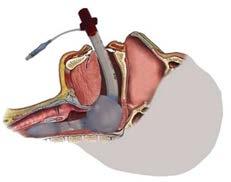
Figure 2: Anatomical drawing of the King LT-D LMA tube in place. (Image courtesy of VBM Medical)
can be used safely in MRI environments, providing continuity in patient care without removing the airway device.
• Resistance to hyperoxic constriction: The i-gel's material resists hyperoxic constriction, which can occur in hyperbaric environments with elevated oxygen levels. This resistance ensures the i-gel maintains its structural integrity and effectiveness in providing a patent airway throughout the hyperbaric treatment.
King LT: The King LT (figure 2) offers several features making it well-suited for use in hyperbaric settings.
• Material compatibility: Materials used in the construction of the King LT LMA should be compatible with hyperbaric conditions. Pressure and oxygen concentration changes may affect materials differently, potentially leading to degradation or malfunction.
• Sealing integrity: The ability of the LMA to create a secure seal might be affected by changes in pressure. Maintaining a proper airway seal is crucial for adequate ventilation and aspiration prevention.
• Monitoring challenges: Monitoring patients in hyperbaric chambers can be challenging. Continuous monitoring of vital signs, including ventilation parameters, is essential so monitoring the position and effectiveness of the LMA should be considered.
• Emergency considerations: Hyperbaric environments present unique challenges in managing emergencies. Providers should be prepared for potential complications related to the airway and have contingency plans in place.
Laryngeal Mask Airways, including the King LT and i-gel, have revolutionized airway management in EMS settings. Their ease of use, reduced risk of complications and versatility make them essential tools for emergency care providers. When comparing the King LT and i-gel, EMS providers should consider the specific needs of their patient population and the unique features of each device to make informed decisions in airway management. Incorporating LMAs into EMS protocols can improve patient outcomes and provide a more efficient emergency response •
SEpinephrine
Automatic Injector Training ISN’T Automatic Automatic Injector Training ISN’T Automatic
By Master Chief Hospital Corpsman Andrew Taylorometimes we take the use of certain equipment for granted, deeming a procedure so simple that we overlook the necessity for proper training, especially when the emergency equipment is used on an infrequent basis.
Skipping proper training on equipment safety is not necessarily intentional; with all the military training requirements and only so many hours in the day, it can be easy to get complacent on things we see as simple and easy to use.
Countless injuries happen annually with such equipment because of a lack of training and a misconstrued sense of knowledge and safety.
In August 2022, Naval Sea Systems Command released a diving advisory implementing guidance for diving units to carry medication to treat anaphylaxis when the hazard for marine life envenomation exists in their operating environment. When maintained, this capability should include sufficient quantities of epinephrine, a 1:1000 solution, e.g., an auto-injector and oral diphenhydramine to treat a minimum of two patients. Children can carry epinephrine auto-injectors for allergies and diphenhydramine can be bought over the counter at your local drug store.
But the question remains: Is training being conducted by our forces for the proper use of these injectors? Many might think the answer is no when search engines show images of injector needles impaling digits and being hooked in the skin. As a diving safety analyst for the Naval Safety Command, I can say I have personally seen this equipment in several first aid kits during assessments. The majority of the time, all members of the dive team have access to the equipment. I recommend all dive units that carry these medications in their first aid kits incorporate training on their proper use immediately for all nonmedical personnel. Training can be conducted by each operational medical department via several existing clinical practice guidelines on envenomation. Units without an embedded medical department should consult their nearest military treatment facility to conduct training. •
Epinephrine Auto injector ready to use. It is a medical device for injecting doses of epinephrine or adrenaline through a needle into a patient suffering an allergic reaction.
SAFETY SPOTLIGHT
Amphibious Combat Vehicle-Transition Training Unit
Camp Pendleton, California
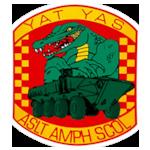

The Amphibious Combat Vehicle (ACV) Transition Training Unit (TTU) was established in February 2023 to facilitate the service’s transition from the legacy Amphibious Assault Vehicle (AAV) to the ACV. The unit was tasked with developing a rigorous and standardized program that validates all previously licensed Amphibian Assault (AA) crewmembers, vehicle commanders, maintainers and unit leadership to possess the technical knowledge, skills and proficiency required to safely operate, maintain, and employ the ACV. To this end, the TTU conducted root cause and trend analysis on over 30+ years of AAV mishaps and recent ACV mishaps to develop, refine and implement safety controls and policies.
you
Under TTU guidance, the AA community now has standardized:
Training officer-in-charge and range safety officer checklists for ACV operations
Operator Certification and Maintainer
Certification programs
ACV crew and leadership proficiency standards
Certification requirements and currency standards
Refined AA Training and Readiness standards
ACV Performance Evaluation Checklists
Templated Operational Risk Management worksheets for 19 critical ACV evaluations
Assault Amphibian Training and Operating
Procedures Standardization manual
AA Center of Excellence
The success of the ACV TTU will have positive ripple effects across all Marine Expeditionary Forces when ACVs are fielded, and will have an enduring strategic impact when incorporating their actions across future platforms and capabilities

PROCESS IMPROVEMENT
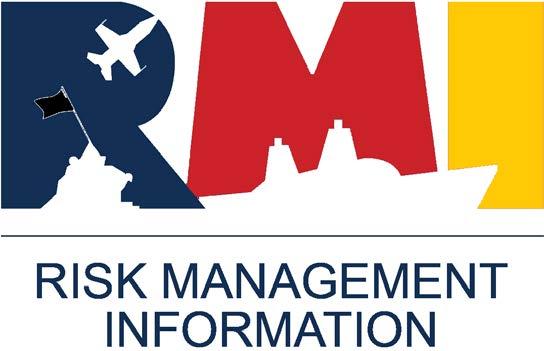
STREAMLINED INCIDENT REPORTING
USE THE FEEDBACK SYSTEM
By Chief Petty Officer Andrew E. Homan, Dive AnalystOften, we find ourselves in situations where the desired outcome in Risk Management Information-Streamlined Incident Reporting (RMI-SIR) was not achieved for one reason or another. Yet we trudge through it, find a way to make it work and accomplish the task. Afterward, we discuss it, usually commenting on how bad the process was to accomplish the task, all the while not taking advantage of the tools at our disposal to enact change or improve the situation.
WHAT IS THE RMI-SIR FEEDBACK SYSTEM?
The RMI-SIR Feedback System enables users to provide suggestions, report errors and send other pertinent information directly to the RMI-SIR support team for resolution. This team is comprised of various personnel that operate the help desk, evaluate and categorize all incoming feedback, code developers who are able to modify the code and the testing staff that evaluates the new changes to ensure product specifications are met.
Why enter feedback?
•System errors
•Suggestions for improvements
•Unresolved help desk issues
•Other comments or concerns regarding system functionality
What is the feedback submission process?
require patience, as the process can take some time. Adding additional functions into the existing RMI-SIR or Dive/Jump Reporting System (DJRS) requires drafting the coding from the developers required to add fields or applications and extensive testing of the new coding before implementation. In 2022, 2,546 feedbacks were closed out; 492 were duplicates or recurring issues, 49 went to the developer’s drawing board for a change in coding, and 38 issues and recommendations were implemented.
WHAT’S THE BIG TAKEAWAY?
Once per quarter, there is a scheduled software release, where RMI-SIR is down for maintenance to push revised updates for new processes and implementation of corrected software. During the weeks leading up to this release, all unresolved feedback is racked, re-racked and stacked for precedence. In the diving community, many feedback recommendations have been pushed multiple times to a lower precedence over other issues facing the fleet. When an inquiry was made as to why, the answer was that the volume did not meet the threshold.
There are issues and errors that are not being reported. When an error occurs, the worst case that can result from submitting feedback is that your submission is met with “Thank you for your submission, your input is valued but will not be implemented at this time.” The best case scenario is that reporting will be less frustrating.
If the RMI-SIR system reviewers that evaluate and categorize all incoming feedback are unaware of issues because of a lack of submissions, no change will occur. Feedback is designed to make the changes to generate better usability of the RMI-SIR system for you, the customers. •
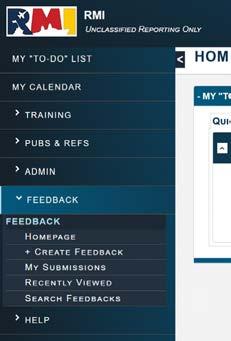
The process for submitting a feedback is straightforward. Once you log into the RMI-SIR system, there are several links to start the process of feedback submission. Whichever method you choose will open a "Feedback Information" window. The selection for "Specific Record" should be [Not Applicable] unless about a specific event. The description should give as many details bout the problem. Screenshots of errors are helpful and can be uploaded with the feedback information.
WHY USE THE RMI-SIR FEEDBACK SYSTEM?
Many issues submitted through the feedback system can be resolved quickly. More complex situations or recommendations
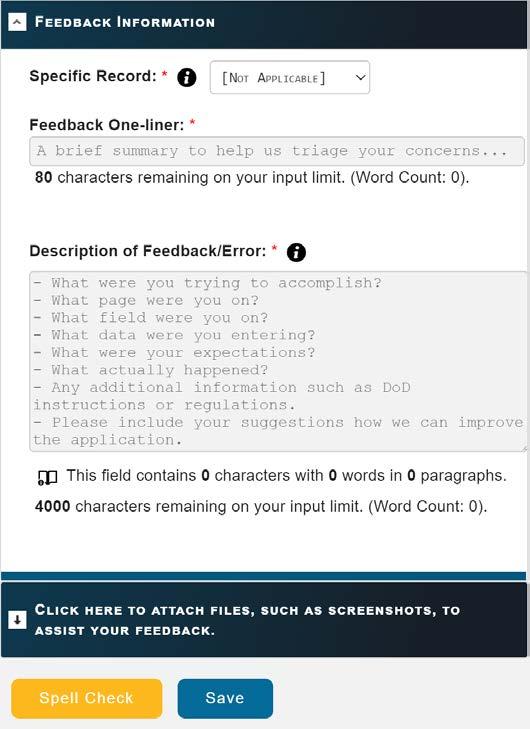
SAVE TIME: AUTOLINK DJRS DIVE REVIEW & SRI EVENT ID
By Chief Petty Officer Andrew E. Homan, Dive AnalystDIVE LOG WORKFLOW
Final Review (Highest Ranking Dive Reviewer)
RECOMMENDED FOR FINAL REVIEWER
Did a Mishap/Hazard Occur? Select Yes Did a Mishap/Hazard Occur? DO NOT MAKE A SELECTION
SRI Investigation has been initiated. Failure to complete the process could create duplication and unlinked logs.
* If a SRI Investigation has been initiated by the command safety representative before the DJRS routing process is complete, a unique SIR Event ID has been created and MUST be communicated to the dive unit.
FReview Dive Log (Dive Reviewer 1 & 2)
Concur? (Dive Reviewer 1 & 2) No Yes
On Which Dive? (Final Reviewer) Select Dive from Drop-down
Command safety representative must communicate to the dive unit.
Select Yes - Enter the unique SIR Event ID
Communicate the unique SIR Event ID to the Command Safety Represenative
Was a preliminary message created? (Final Reviewer) Yes No
- Enter Dive Details
- Select Create Mishap/Hazard - Select Confirm
Autolinked to SRI investigation
uture mishaps are prevented by concise information and clear communications in each unit. Many personnel involved in the dive log process may not have the same understanding of the workflow. When reporting a mishap the duplication of investigations creates rework, confusion and errors in analysis.
The Risk Management Information- Streamlined Incident Reporting (RMI-SIR) system and Dive/Jump Reporting System (DJRS) are able to communicate with each other; however, the process is very limiting. These two operating systems are separate and DO NOT AUTOMATICALLY LINK with each other. There are steps that must be performed in order to correctly autolink a unit’s mishap dive log in DJRS with a RMI-SIR incident report. The two methods to successfully accomplish this task; one method starts with the dive log and the other is initiated by the command safety representative. Whichever method chosen is up to the command that experienced the mishap. Communication between the command safety representative and the command dive unit is paramount through this process.
1. Dive unit logger inputs the dive information into DJRS and routes it through the reviewing process. When entering the dive with a mishap in DJRS, the logger SHOULD NOT select “Did a Mishap/Hazard occur?” It is strongly recommended that this selection be completed during higher authority review process of the dive log either the reviewing diving supervisor, Master Diver, or Diving Officer. Selecting the value of yes to this section will initiate the investigation automatically.
2. Through the dive log routing process, communication and delegation of responsibilities need to be clearly defined and established. Up to three dive reviewers may review the dive unit DJRS log once routed from the logger. The command senior dive reviewers should be dive supervisors, master divers or diving officers. It is recommend that the highest-ranking command senior dive reviewer should make the “Did a Mishap/Hazard Occur?” selection. Only one senior dive reviewers should be designated to initiate the final report and click “Yes” for the “Did a Mishap/Hazard Occur?” question located in the Dive Review section within the dive log.
3. This will prompt the question “On Which Dive?” Use the dropdown feature to select the dive activity in which the mishap occurred.
4. This should prompt a window asking, “Was a preliminary message created?”
COMPLICATIONS: If the command safety representative cannot or did not wait for the DJRS to be routed and an investigation has already been created in RMI-SIR related to this mishap; the command safety representative needs to communicate to the dive unit the unique RMI-SIR Event ID that was created. Enter in a value of “yes” and input the provided RMI-SIR Event ID from the command safety representative. If the command safety representative did not initially create an investigation, select a value of “no” and continue through this process.
5. Fill out the One-Liner and narrative sections. The one-liner is limited to 140 characters and should be a concise, newspaperlike headline that describes the event. The narrative should be detailed. Enter chronologically the actions leading up to the mishap, the details of the mishap and actions taken after the mishap. Explain what happened, not why. Do not provide personally identifiable information and keep abbreviations to a minimum.
6. Select “Confirm” on the Create SIR Mishap pop-up. This will initiate the autolink function and notify if it was successful. Once it is processed and completed, select the OK tab. If there was no preliminary message created, you will receive and Event ID. The dive log reviewer that initiated process must provide that information to the command safety representative so they are able to locate the event within RMI and properly complete the report.
7. Finalize the dive log. COMPLICATIONS: If the reviewer that selected “Did a Mishap Occur” and initiated this procedure is not the command senior dive reviewer, communication to the subsequent reviewers of this process is required. Failure to do so may result in the creation of duplicate RMI-SIR Events.
Congratulations! The dive log is properly autolinked to an RMI-SIR report, and no duplicate RMI-SIR investigation reports were created. An understanding of who is responsible for which processes and when to complete each step is paramount.
The dive unit reporting a mishap may not have a similar understanding of the RMI-SIR system. It is up to everyone involved to communicate effectively. The interaction among all reporting parties plays an essential role in the approval and release of these reports to the fleet. These mishap reports are crucial to identify trends, better train our diving community and prevent future mishaps.
DIVE REPAIR
DOUBLE SCUBA BOTTLE BANDING
By Brett Husbeck, Navy Diving Safety Program SpecialistDuring recent Diving Safety Assessments, Naval Safety Command found self-contained underwater breathing apparatus (scuba) doubles with one band holding them together. This banding puts undue stress on the manifolds and is also a safety concern. A banding adapter kit is required.
The banding kit comes with two bands and the hardware to put them together. If you receive new scuba bottles, or you’re turning your single bottles into doubles and don’t have enough bands to properly secure them together, wait until you have all the required parts before you put the scuba doubles into service. “Do you want it done right or do you want it done right now?” applies.
Manufacturer’s assembly instructions
Thermo or XS Isolation Manifolds: POSITIONING BANDS ON CYLINDER
While the cylinders are laying parallel, on their side, slide the top band up the cylinders until it is just below the shoulder of each cylinder. Ensure the crossbar can still rotate freely by hand. If it cannot, the cylinder band spacing is not matching the manifold spacing, so the manifold will need to be lengthened or shortened accordingly. Position the bottom band so that the bolts will be spaced exactly 11 inches apart, when measured center-to-center.
TIGHTENING BANDS
Insert the band bolts from underneath the bands. Examine the entire assembly. If the cylinders are parallel to one another and able to lie flat, then alternately tighten the nut on each band bolt until they are snug. Do not over-tighten to the point where there is visible distortion in the band reinforcing plates under the nuts. End of procedure.
The adapter kits comes with two individual nylon straps per bottle, one cylinder strap, two traction sleeves, one adapter block and all the hardware to assemble a kit. Using the second band at the top of bottles will potentially hinder the ability to use the nylon straps provided.
The other concerning finding was using one band on twin manifolds with a J valve. The only authorized way of using
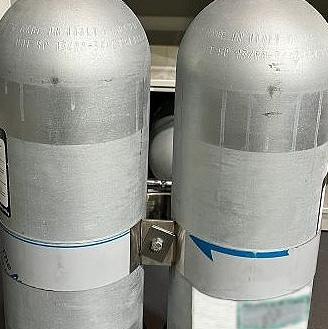

one band is if you have the Aqualung twin cylinder adapter kit P/N 18252 (figure 2) and are using the following buoyancy compensators:
• Black Diamond: All* Pro Unlimited: ML, Lg, XL/XXL
• Pro QD: ML, Lg, XL/XXL
• Pro: ML, Lg, XL
If you are using a buoyancy compensator that does not have the Aqualung adapter kit P/N 18252 and has two nylon straps that wrap around both bottles – or your command is using two individual single scuba bottles for a redundant air source, use both metal bands. The twin tank harness system comes with two bands and the hardware to assemble them.
Naval Safety Command and Naval Sea Systems Command are working together to find common ground when it comes to the proper application of using two metal bands or one metal band with the proper buoyancy compensator on scuba double bottles in Navy diving. •
SAFETY SPOTLIGHT
Chief Warrant Officer 3
Patrick Sherrick
Regimental Safety Officer
3rd Marine Division

Chief Warrant Officer 3 Patrick Sherrick served as Regimental Safety Officer for 12th Marine Regiment (redesignated to 12th Marine Littoral Regiment in November of 2023), 3rd Marine Division from October 2022 to September 2023. During the Commanding General's Readiness Inspection and other safety- related inspections within the regiment, he received a noteworthy performance with no significant findings.
Following the results of adjacent inspections, 12th Marine Regiment's Safety Management System was recognized as the best within 3rd Marine Division. In addition to completing the tasks of his primary billet,
he spent more than 500 hours engaging and inspecting individual sections, barracks managers and subordinate battalion safety representatives to maintain compliance with Division, Headquarters Marine Corps and Occupational Safety and Health Administration policies. In addition, Sherrick expertly managed a $14,000 safety budget to distribute, issue and train with personal protective equipment throughout the command.
His innovative periods of instruction and management of safety resulted in a 50% reduction in reportable safety mishaps within the regiment, setting a new standard.
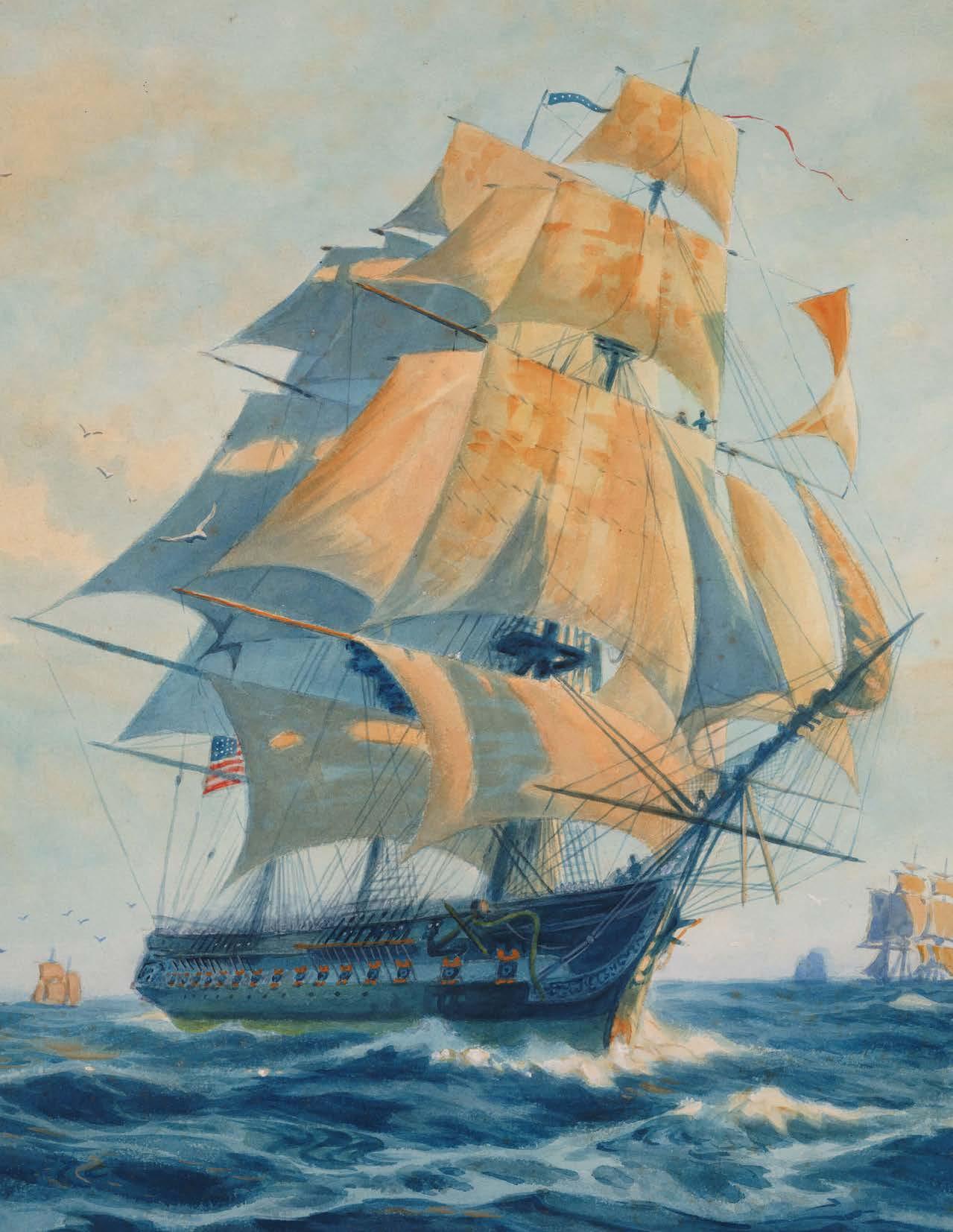
Fair Winds & Following Seas

As this edition of Ground Warrior hits the Corps, I’ll wrap up a 34-year career in our great Navy. It has been an incredible honor to serve alongside the men and women who have answered the call to wear the cloth of our nation.
The last two-plus years have been one of the highlights of my career. From the first day I entered the Navy, I have been continually impressed with the dedication and hard work exhibited by Naval professionals focused on excelling in demanding and sometimes dangerous environments. Looking back over my time as a surface warfare officer, INSURV commander, and Expeditionary Strike Group commander, the relationships I have built have fueled my passion to communicate and mitigate risk to keep Sailors and Marines operating safely and safe to operate. I can’t think of a better way to wrap up my career than serving as the Commander of the Naval Safety Command.
In today’s operating environment, it is essential we maintain our Naval readiness to meet the challenges laid out by the Secretary of Defense and the Secretary of the Navy. We have significantly changed our structure to fully integrate the Safety Management System into the way the Navy and Marine Corps manage risk in the pursuit of operational excellence. The command seamlessly collaborates with the Marine Corps to identify and address pre-mishap risks through execution of an effective safety management system, including a robust, tiered safety assurance process. We now look at risk with a common lexicon, better positioned to communicate and mitigate risk across our Naval forces. This synergy provides for better integration and vision to ensure the readiness and combat effectiveness of our Naval Forces.
I will turn over the Naval Safety Command to Rear Admiral Daniel Martin. As a former Carrier Strike Group Commander and Director of Maritime Operations, U.S. Pacific Fleet, he is the right person for the job to lead our combined forces’ efforts to improve safe operations. From a professional perspective, he brings a wealth of experience across multiple warfighting communities. I know he will serve our Sailors, Marines, Civilians and their families with a sense of purpose and commitment.
Your Naval Safety Command will continue to provide a third-party oversight to help communicate, elevate, and mitigate risk to ensure we preserve our warfighting readiness. My wife, Kristin, and I wish you all the best in your future endeavors.
 Admiral C. M. Engdahl Commander, Naval Safety Command
Admiral C. M. Engdahl Commander, Naval Safety Command
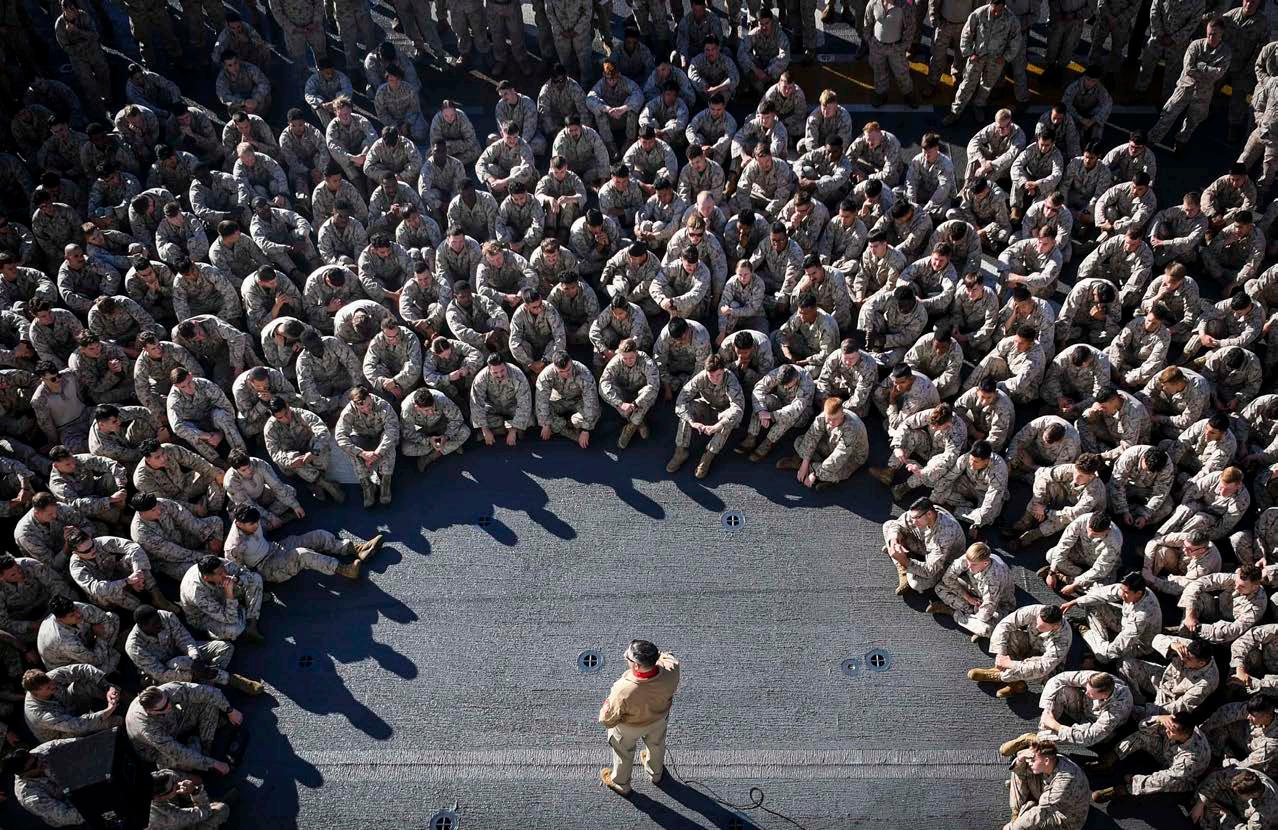
Please






Safety in Your Pocket
By Leslie TomainoNaval Safety Command (NAVSAFECOM) app is a mobile-friendly way to keep up to date on all things Navy and Marine Corps safety and risk management. The app allows Sailors and Marines on-the-go access to safety-focused learning and improved communication.
The mobile app is a robust toolkit containing NAVSAFECOM products, such as checklists, forms, news, videos, instructions and directives, as well as warfare community-specific products and information. It reinforces important safety and risk management information that can be universally useful throughout the naval enterprise, from safety representatives to service members daily.
“This mobile application allows our Sailors and Marines to access and download information in advance for use remotely,” said CMDCM (AW/SW) Dean Sonnenberg, NAVSAFECOM command master chief. “This app is an additional tool for the warfighter and safety professional to help advance our mishap-focused, reference and standards-driven lens.”
Users have the option to personalize their preferences and select content specifically relevant to warfighting communities and categories. These communities include aviation, shore, afloat and expeditionary.
Users can download the free app from the App Store (Apple) or Google Play by searching “Naval Safety Command” or “NAVSAFECOM” in the app stores or your web browser. Sailors and Marines can also find this app and many others in the Navy App Locker: https://www.applocker.navy.mil •

SUBMISSION
When submitting articles and photos, please include:
Title: Headline, though it is subject to change
Author info: Rank, first and last name, as well as unit or organization
Article: Authors should fact check and ensure statements are backed by references or sourced data. Spell out acronyms on first reference. Spell out all organizations and units, as well as city, state or country. Authors need to ask a team member and/ or subject matter expert to review article before submitting. NAVSAFECOM and/or CMC SD may make additional changes for clarity and style during the review process. Article length should be 450-1600 words. Safety Spotlight inputs should be 90-150 words and include a photo.
Photos: All submissions must be sent as separate files and approved for public release. Images should adhere to established safety and security policies. Images should be the original with minimum 1 MB file size. Include the photographer’s full name, rank, unit and full description of the image and date taken.
Send to: GroundWarriorMagazine@usmc.mil
We look forward to including your submissions!



https://www.safety.marines.mil/






